No Results Found
The page you requested could not be found. Try refining your search, or use the navigation above to locate the post.
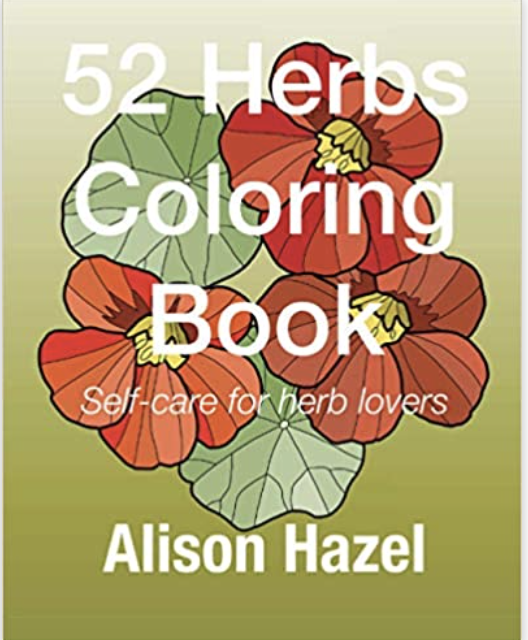
I have always been a keen herb grower so it seemed a natural move to draw the herbs I love.
The next step was to put them all together in a coloring book.
This coloring book contains all my original herb drawings.
Your can get your copy from Amazon on this link.



To improve your experience with my coloring pages I have made some recent changes (September 2022).
I used to have these coloring pages available as PDF downloads, but people struggled with the download process, so I have now changed things.
Now you can only get the coloring pages in the book from Amazon.
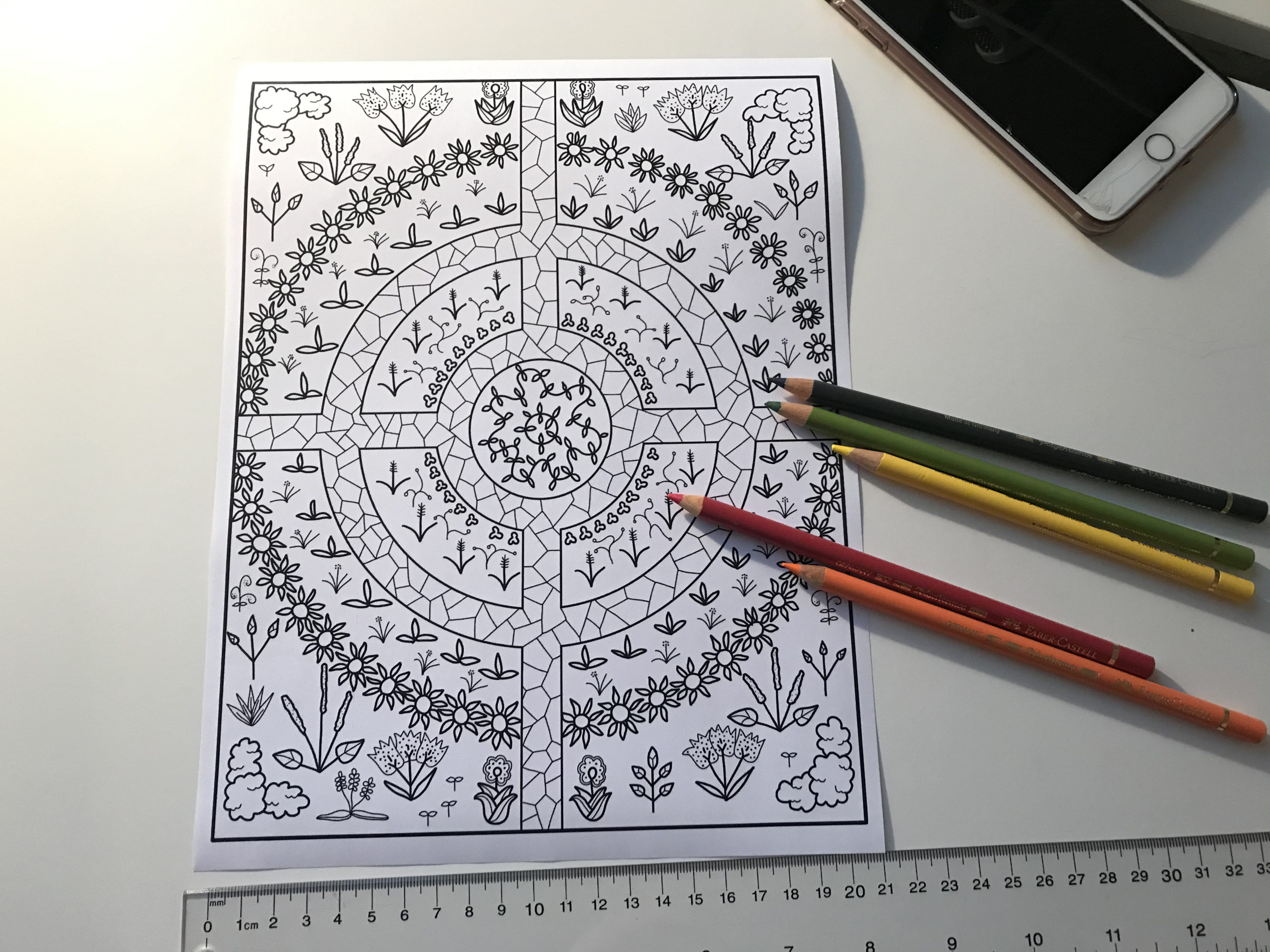
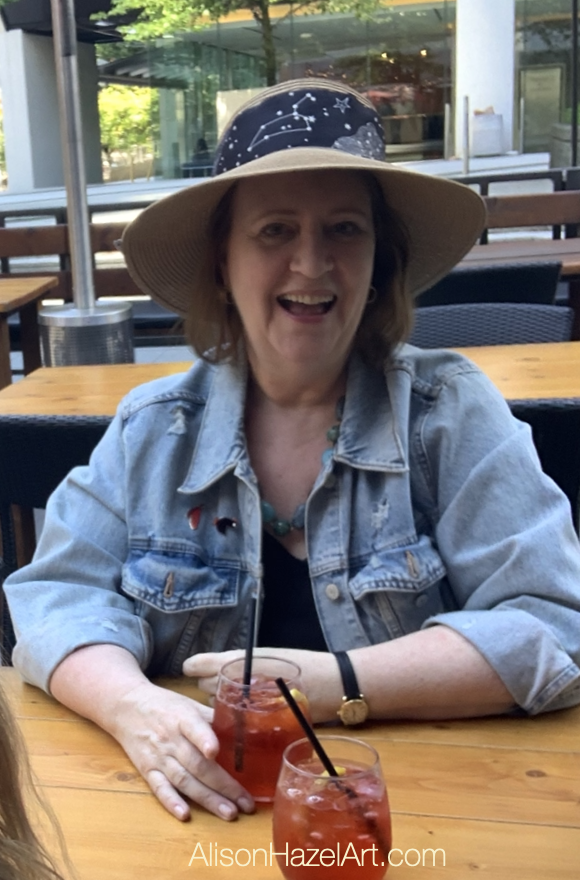
Alison Hazel is a mature woman who shares her ongoing journey about becoming an artist later in life. She creates simple art that anyone can make. She hopes to inspire you to reach your creative potential in the area that suits you.
Go here to read more about Alison’s story.
If you want to send Alison a quick message go here.
Read some more artciles from our blog.
The page you requested could not be found. Try refining your search, or use the navigation above to locate the post.
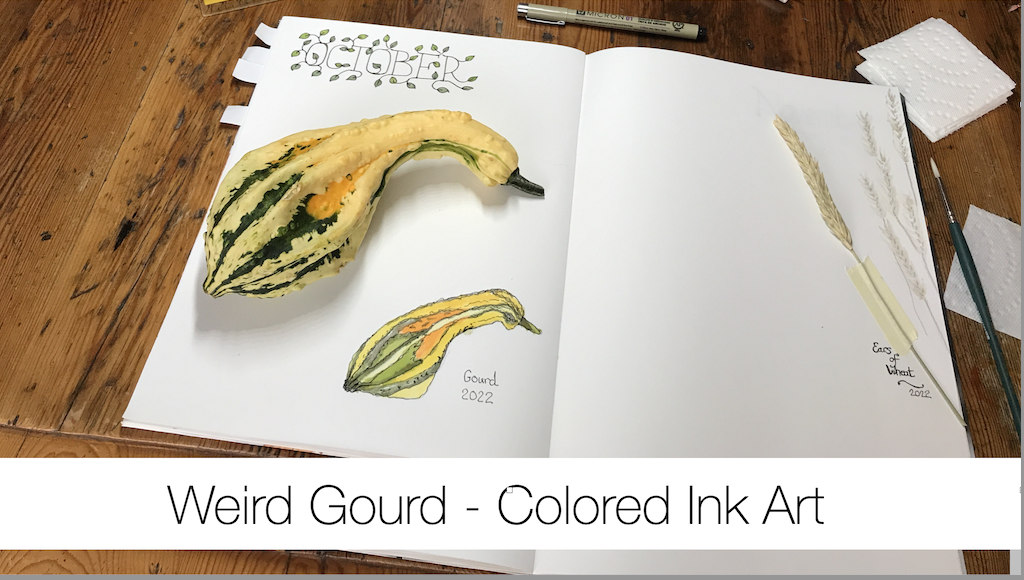
Join me as I sketch, draw and paint a weird autumn themed knobby gourd using colored ink as a hobby artist.
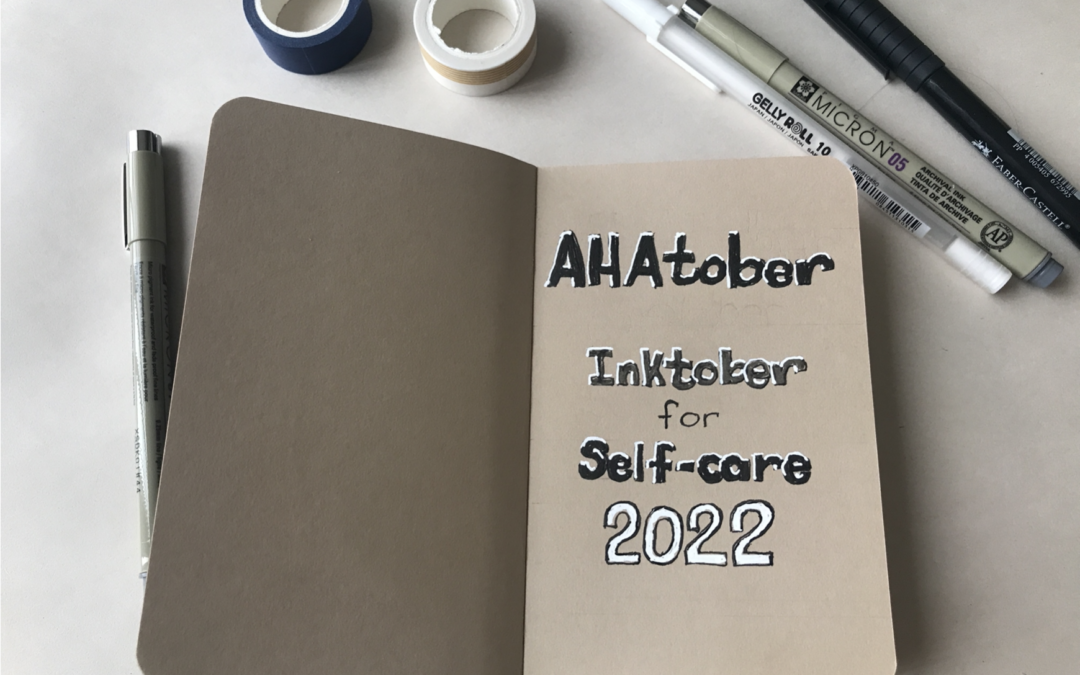
Get the AHAtober prompts and learn how you can win Inktober, what I’m doing to compete and what to do with what you draw.

The use of art as self-care is well documented. Art can be therapeutic and many people say this is true. In a busy digital world, there is an urge to disengage from text-based connections with others. Drawing and sketching may help bring balance to the input your brain gets every day.
Personally, I turned to art at a time in my life when I could not deal with another conversation as I seemed to be going around in circles with the issue at the time. I’d wake up and immediately start ruminating about what happened yesterday and replay conversations and situations in my head.
I would think, “I should have said this or that” or “I should have done things differently.” There was no let up. I became weary and tired.
I turned to my art journal and began again.
I now write my thoughts on the right-hand page and draw a corresponding picture on the left-hand page. I am right-handed so it’s easier to write on the right-hand page and usually there is more paper underneath to support the pen. We used to do this type of work in grade school way back where it is still used as a learning aid.
You remember things better if you hear them, write notes about then and draw an image about them. Clearly you can go further and make a model out of cardboard or macaroni, dance it out, pen a poem, write song lyrics, sing about it or do a play.
Let’s keep to the writing and the drawing. Words and image. Make notes and draw a picture about it. This technique is a basis of art journaling.
Take your art journal, a pen and go to a coffee shop. Get a cup of coffee and settle down at a table. In your art journal please do the following:
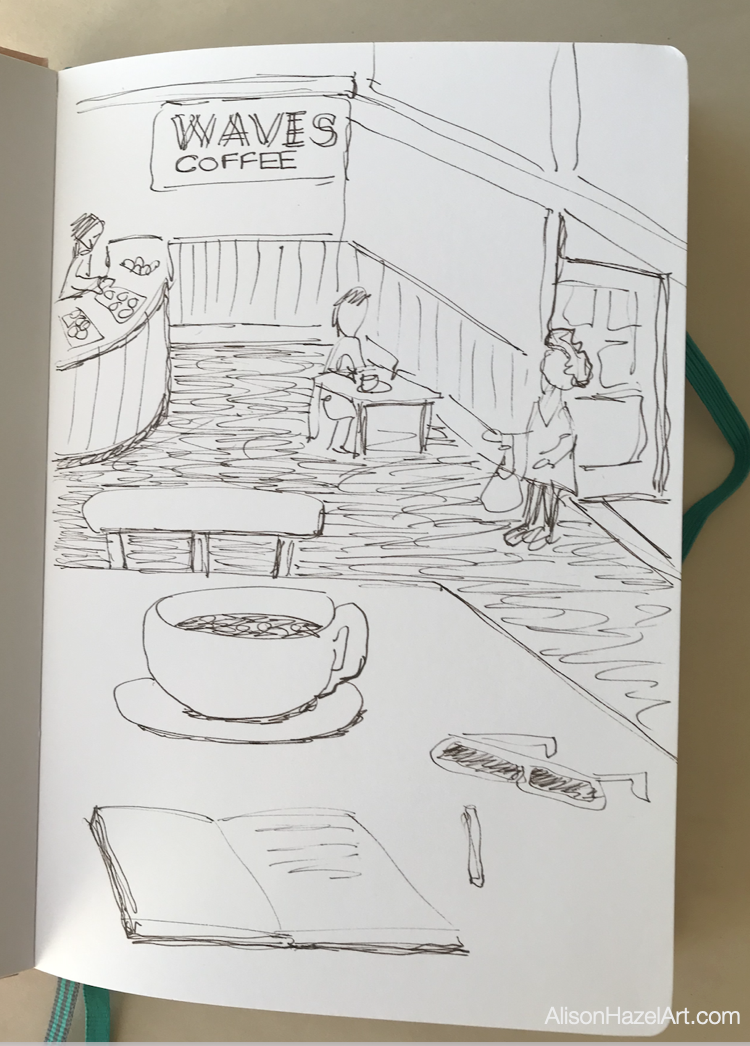
You have now completed your first art journaling sketchbook entry.
Doodling is the act of drawing squiggles and mini shapes and characters on the corner of a page. It is what you do when they put you on hold on a phone call with your pen in hand. Doodling can be lines, curves, faces or whatever. But it is an outpouring of what’s on your mind and in this way it can be helpful.
If you look carefully, you can eke out a quarter of an hour each day for your daily art practice. Fifteen minutes of drawing daily can soothe your mind.
For my daily art practice, I have a special small A5 sketchbook just for my quick daily art drawings. These sketches are unlikely to ever see the light of day, but they can often be the basis for later more complex drawings that I create.
I like the idea of letting sketches incubate until they turn into something else. Simple objects around you are great subjects to draw.
To establish a daily art practice is of huge benefit for several reasons:
Here are some examples I did of daily art practice with pencil sketches of flowers:
Breathing, we all do it, in and out, in and out, in and out… Regular breathing tends to be shallow and has the same count for in and out.
You breathe in for a count of three and out for a count of three. Inhale one, two, three and exhale one, two, three. This is natural breathing.
A controlled breath helps to calm the mind and reduces blood pressure.
Try this activity and the trick is to control your exhale.
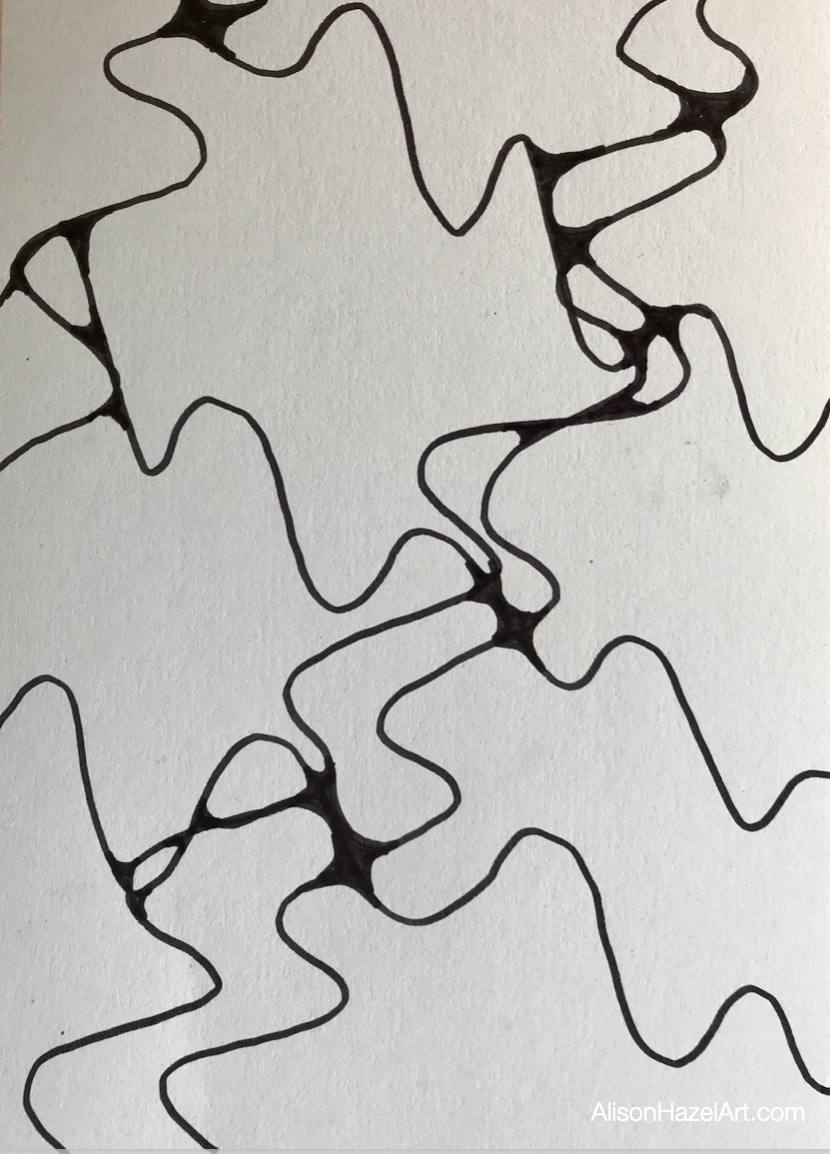
On your paper and with a black pen please do the following:
Neurographic art is an art movement that I recently discovered as I was searching for art and mindfulness. I began with some basics and now enjoy making neurographic art.
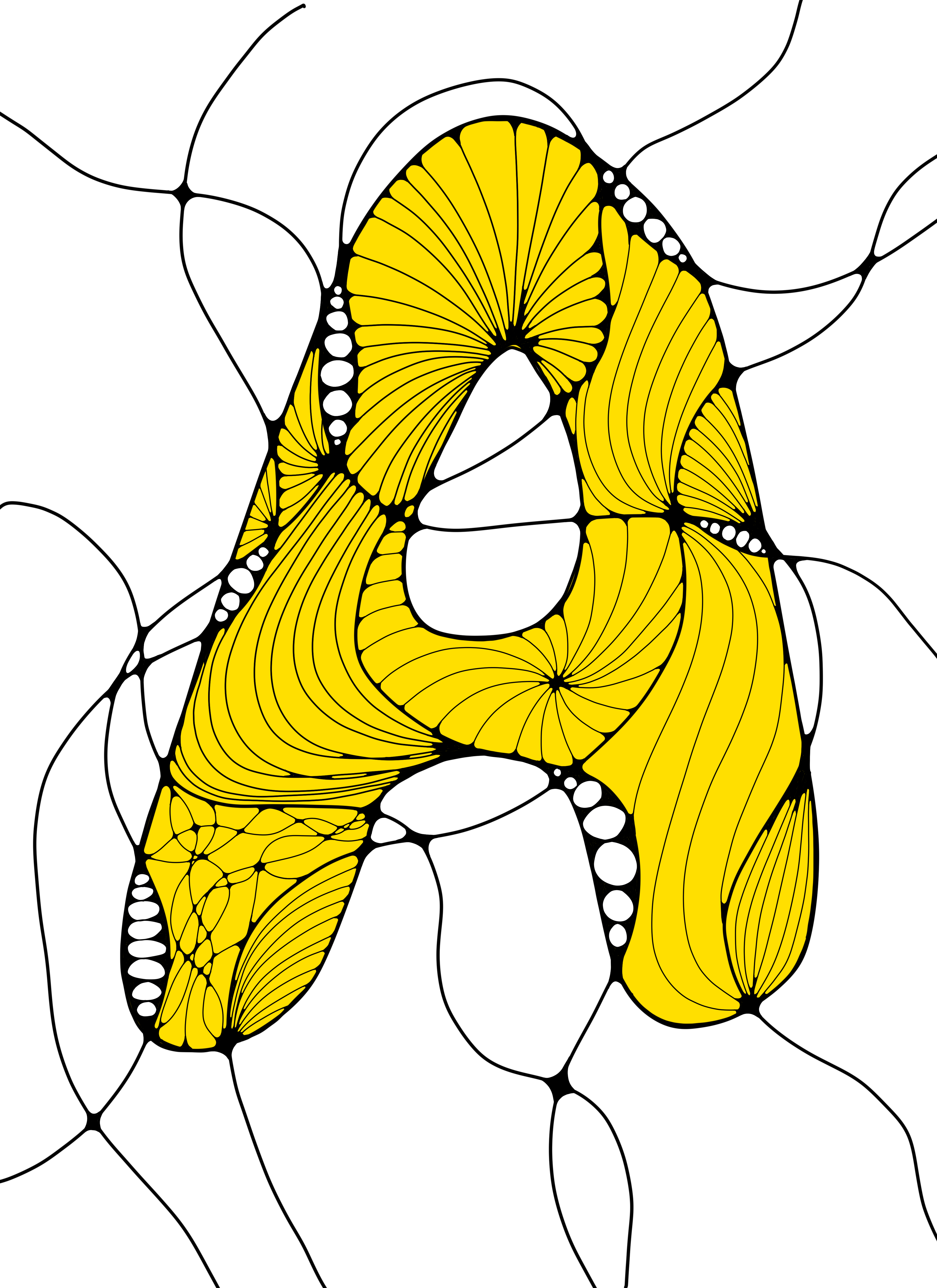
Some examples of my beginner attempts at neurographic art are here:
Journaling comes in several flavors:
Art practice sketches and thoughts. Some of my examples of art journaling are here:
To my mind, sketch journaling is drawing what you did and where you went.
Nature journaling is drawing the natural world. You would typically start with plants and insects in your own garden. This is a great activity to do with the kids or grandkids.
A perpetual journal is divided into twelve months and you capturing some images each month.
Example pages:
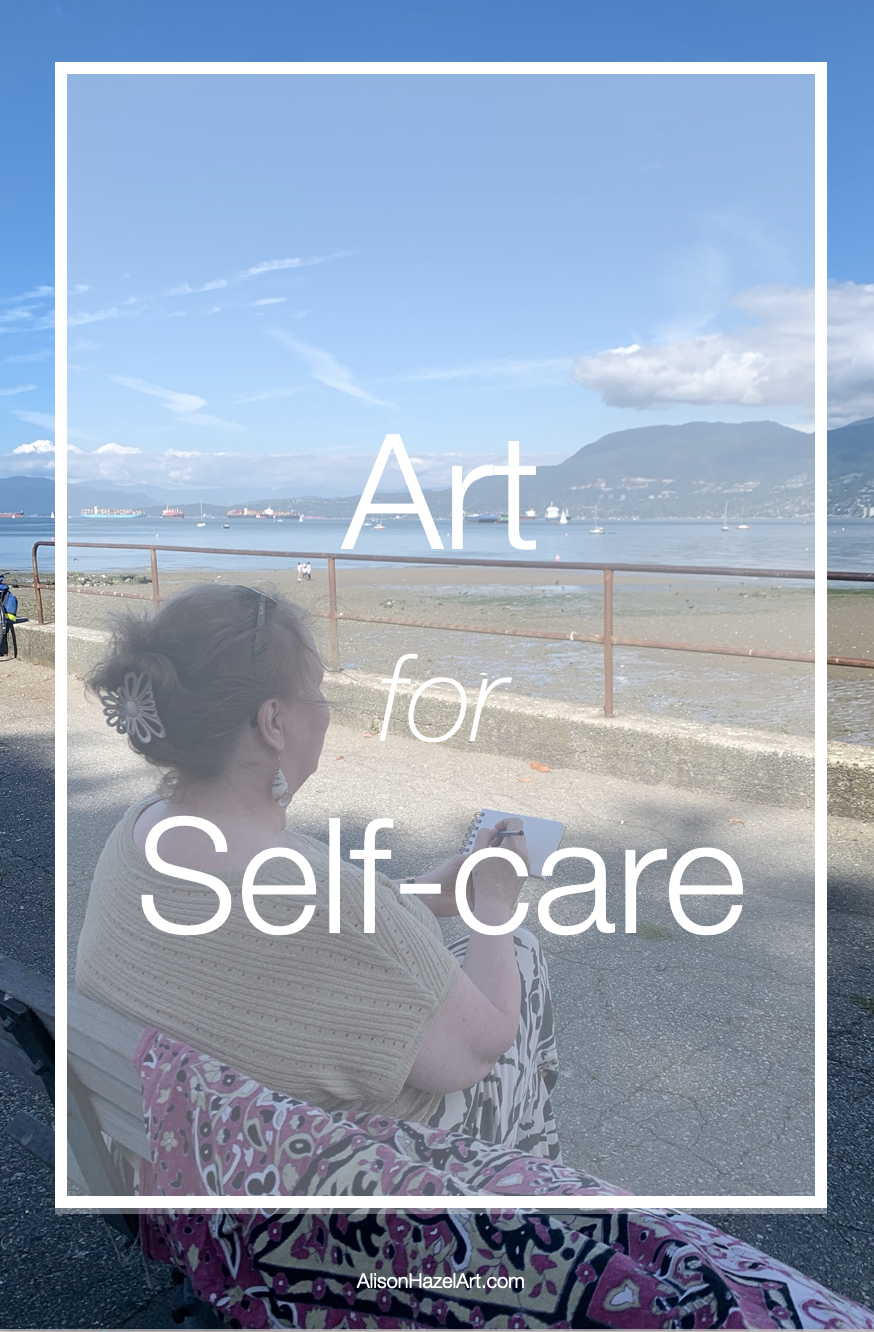
Pin this image to your Pinterest board.
A perpetual journal could be for anything that interests you. The benefit of a perpetual journal is that it is evergreen and grows every month.
Perpetual journals can easily become records of your life and can be handed down to the family like an heirloom. Think back to Edwardian women embroidering stitch samplers which show what they could do. These cloths are most desirable today as family records. Perpetual journals can be your legacy.
A legacy journal is one you leave behind for those that follow. Typically, it was a family history book containing the family tree, but it can be focused on what and who you are. Examples of a perpetual legacy journal that you could make are:
I’m sure you can think of many more perpetual legacy journals.

Alison Hazel is a woman who shares her ongoing journey about becoming an artist later in life. She creates simple art that anyone can make. She hopes to inspire you to reach your creative potential in the area that suits you.
If you enjoyed this article on Art for Self-care you may like some other posts from our blog.

Author: Alison Hazel - Published: January 2023 - Revised: February 2024 Gifts for You As a strong creative and arty person, for many years, I have generated countless free resources on Alison Hazel Art. These guides, lists and templates are to help you get...
The page you requested could not be found. Try refining your search, or use the navigation above to locate the post.
The page you requested could not be found. Try refining your search, or use the navigation above to locate the post.
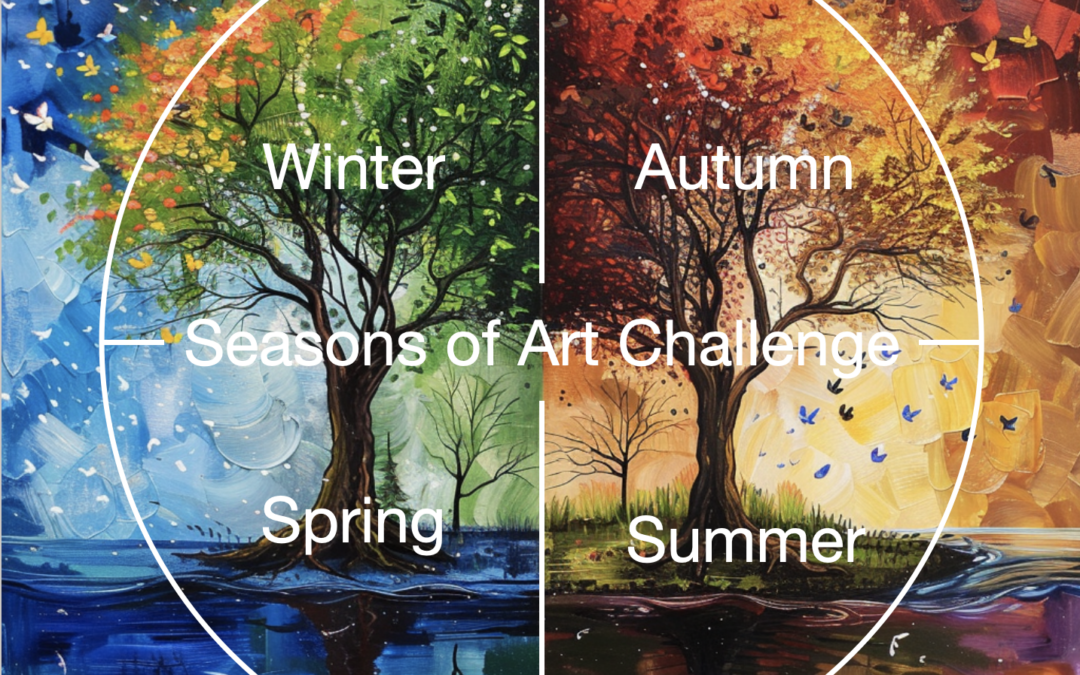
Every year brings four seasons spring, summer, autumn and winter. Technically each season starts as the Sun crosses an equinox or solstice point in the year.
In the northern hemisphere spring occurs around March 21st, summer occurs around June 21st, autumn starts around September 21st and winter begins around December 21st.
In the southern hemisphere spring begins around September the 21st, summer begins about December the 21st, autumn begins near March 21st and went to begins near June 21st.
Note: Each year the dates may be slightly different, so for the purposes of this post I’m sticking with the 21st of each month. It just makes things easier.
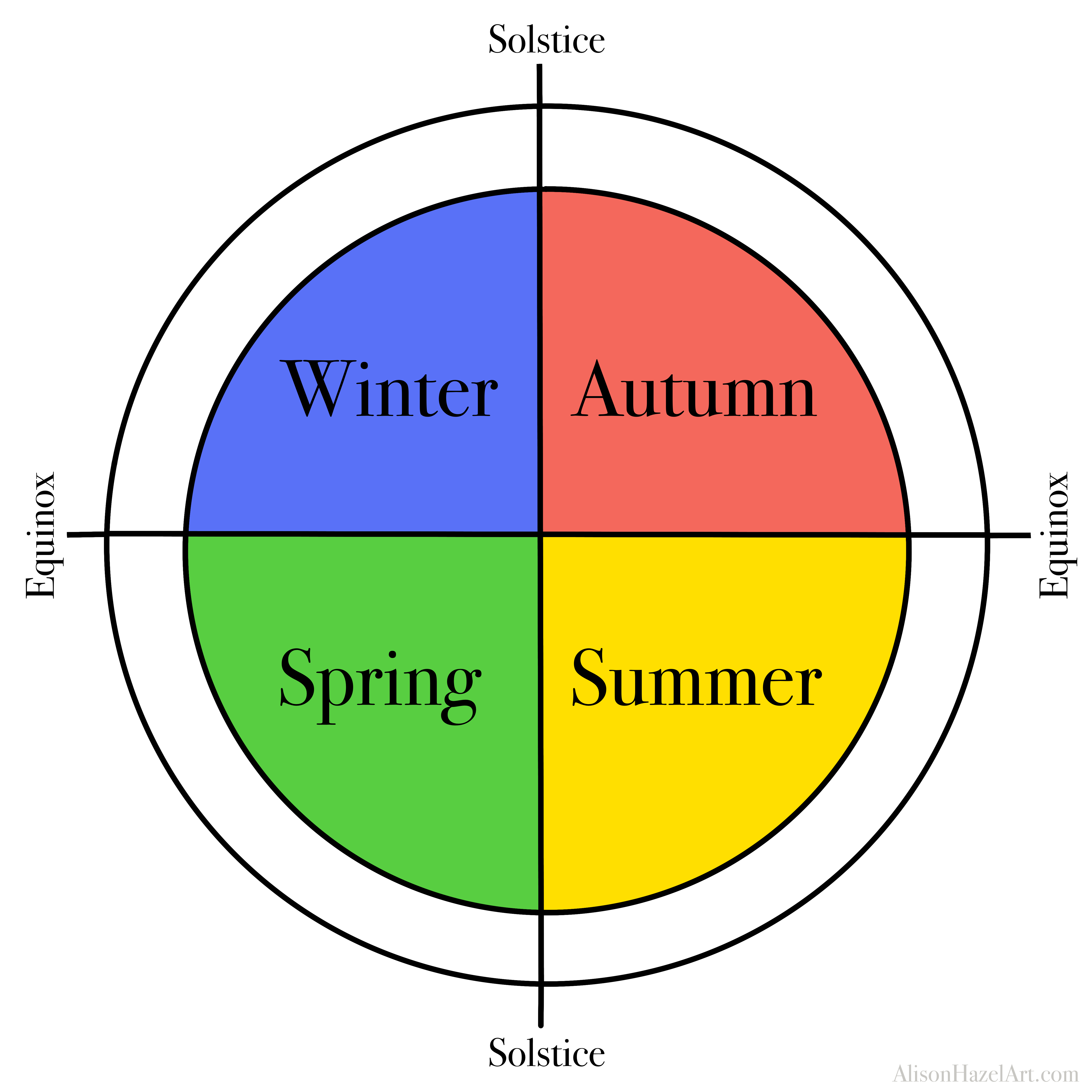
Winter is from December 21st for thirteen weeks until the Sun again crosses the equator at the equinox on March 21st. This means that winter contains just over thirteen weeks or around three months. But the three months period of a solar quarter is different to what we would normally call the fourth quarter or Q4.
Time quarters refer to the four quarters found by dividing the year directly into four. Each quarter contains three months. The four quarters are:
These are the usual time quarters that are used for business. The seasons are different and start at specific dates in the year. They begin are around the 21st of March, June, September and December.
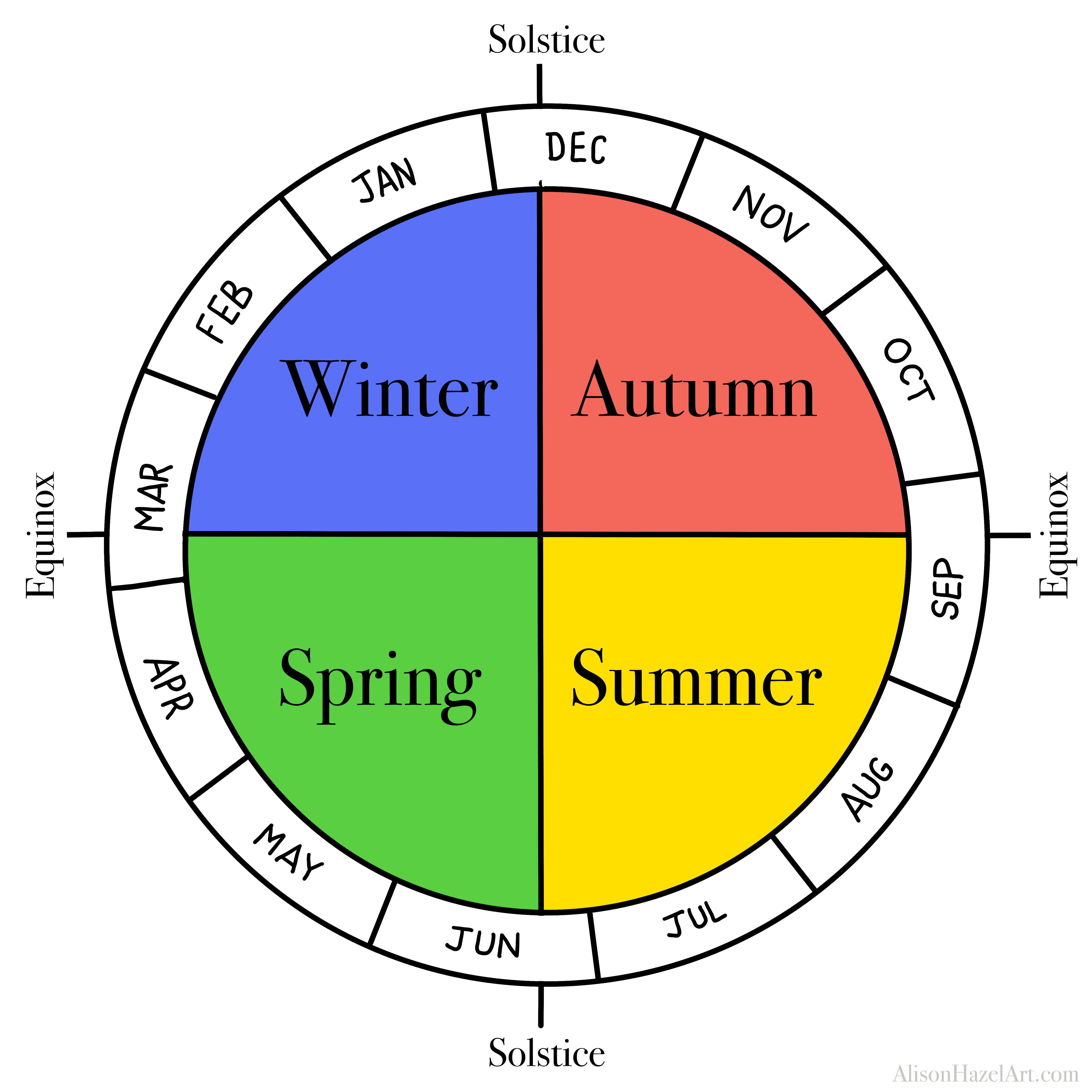
I like the idea of aligning myself with the natural rhythms of the Sun much like phenology. I thought it would be a good idea to create the Seasons of Art challenge which will happen four times a year during each season. It’s up to you whether you do the full Four Seasons in any given year.
The first Season of Art kicked off in winter. Use the hashtag of #seasonsofartchallenge asthis avoids the winter is north and summer is south issue completely. December 21st, will align to the beginning of winter in the northern hemisphere and for those of you living South of the equator, it will be the beginning of summer.
Because I am writing this from Vancouver, Canada in the northern hemisphere, I will refer to northern hemisphere seasons although I do respect the southern hemisphere folk as I did live in South Africa south of the equator, for most of my life. If this all sounds complicated, then I apologise. The point is to work with the natural seasons created by the Sun.
The Wheel of the Year is a diagram that divides the year up in a natural way.
The division start with the two solstices and the two equinox divides the wheel of the year into four solar quarters. The four quarters are the Four Seasons. Each season begins as the Sun transits the equinox or solstice points.
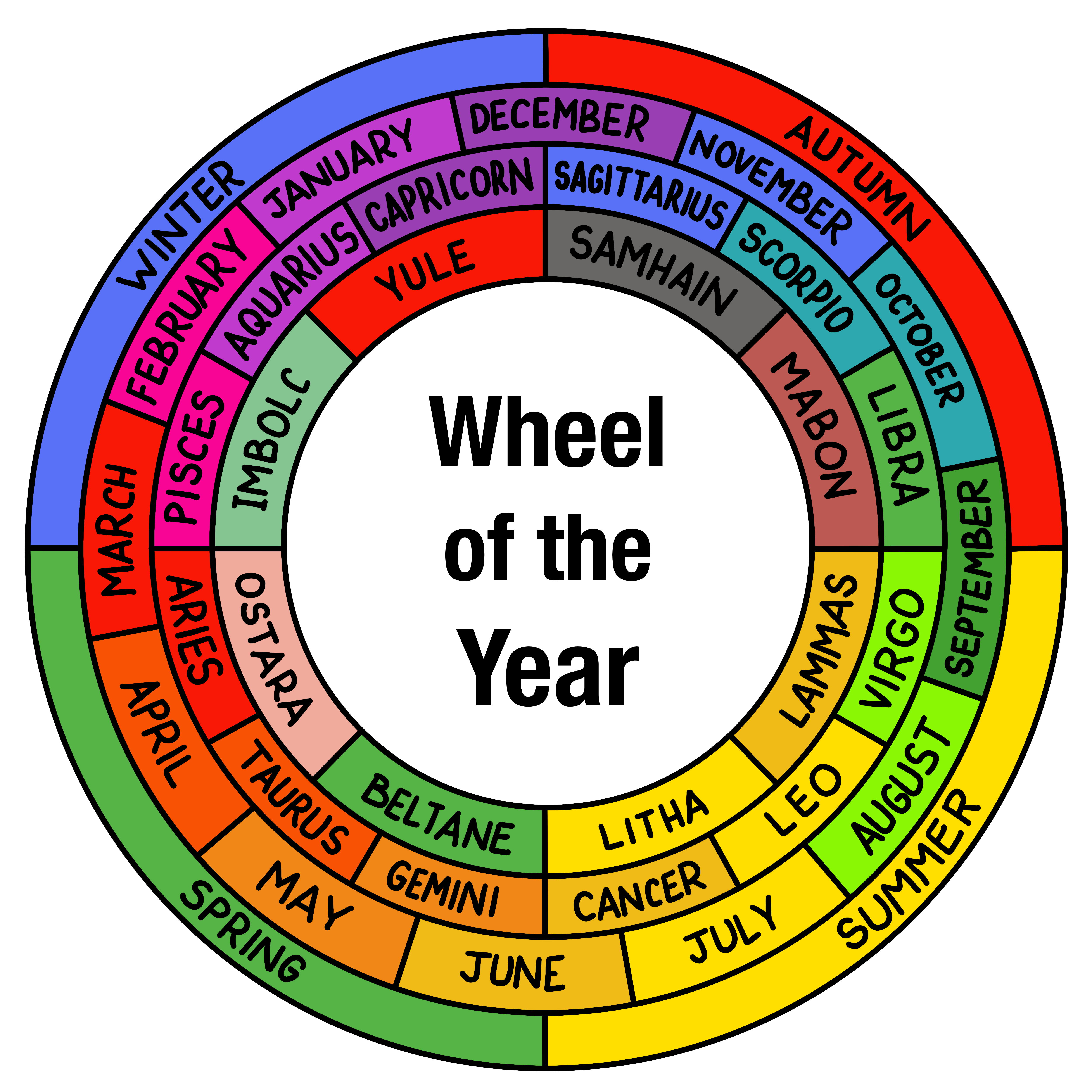
The pagan quarter days have special names.
The cross-quarter days are the midpoints of each of the four quarters. Each of the solar quarters can again be divided by the midpoint day which is typically the first of the month’s February, May, August and November. In the Pagan world the cross-quarter days have special names some of which may be more familiar to you than others.
Each quarter contains 13 weeks. The idea of Seasons of Art is to draw thirteen artworks in each season. Below are the thirteen prompts for each season upcominging. Even though each quarter may start at a different day in the week, I’m counting the weeks from Sundays.
Week one would be from the Sunday to the Saturday and then week two would start on the next Sunday. The reason I choose Sundays is because I believe it’s the first day of the week.
Every Sunday draw a picture using the Seasons of Art prompt for that week.
You may start by just completing one season’s worth of artworks. Perhaps you will do the Winter or Summer season.
You can use your favorite medium like markers, pen and ink, colored, pencil watercolor, acrylics or oils etc. It’s up to you.
You have one week to complete each drawing, so there is no rush. Once you have completed the first season you can continue on and create 52 artworks for the year.
You win when you have completed the whole challenge and you have 52 artworks to be proud of. Good luck.
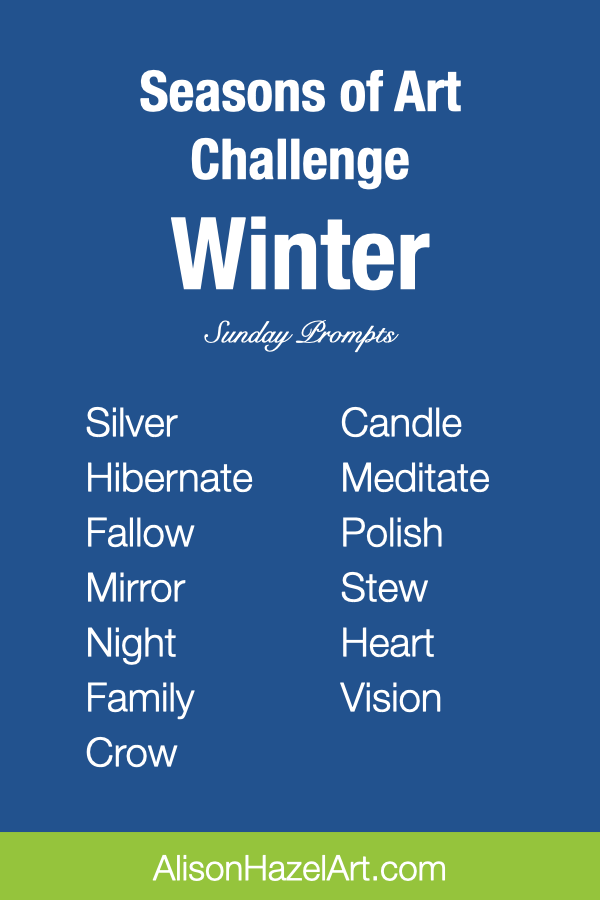
Save this pin to read later.
Below is the Winter prompts page in my Seasons of Art Journal. I’ve written the prompts in the first quarter (or season) of the book. This will act as a reminder of what I was doing when I look at the journal in years to come.
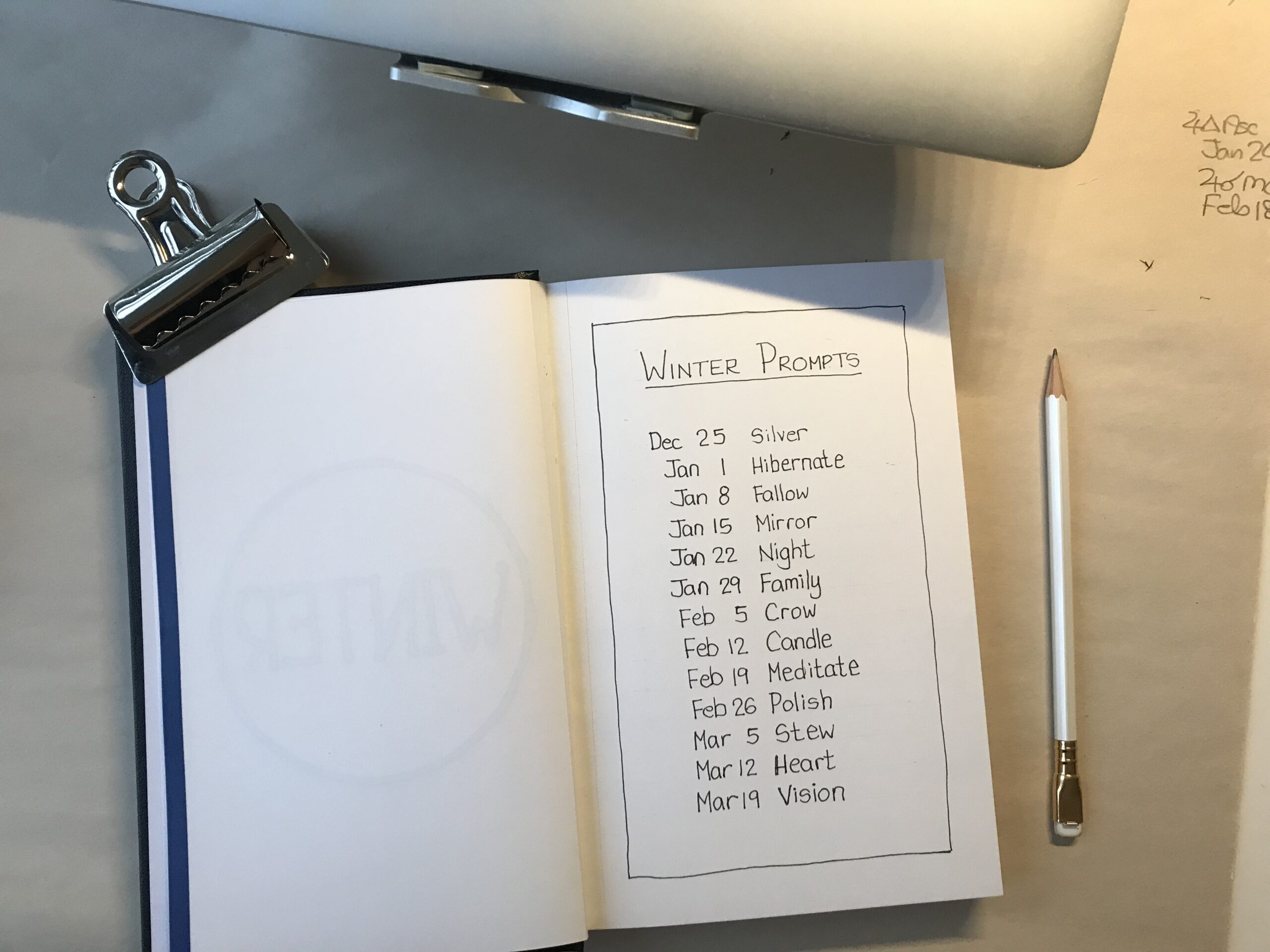
In this image I imagined the Moon to be silver and to have a silvery glow to the top side of the tree’s branches. I may still have to get out my actual silver inks to bring this one more to life.
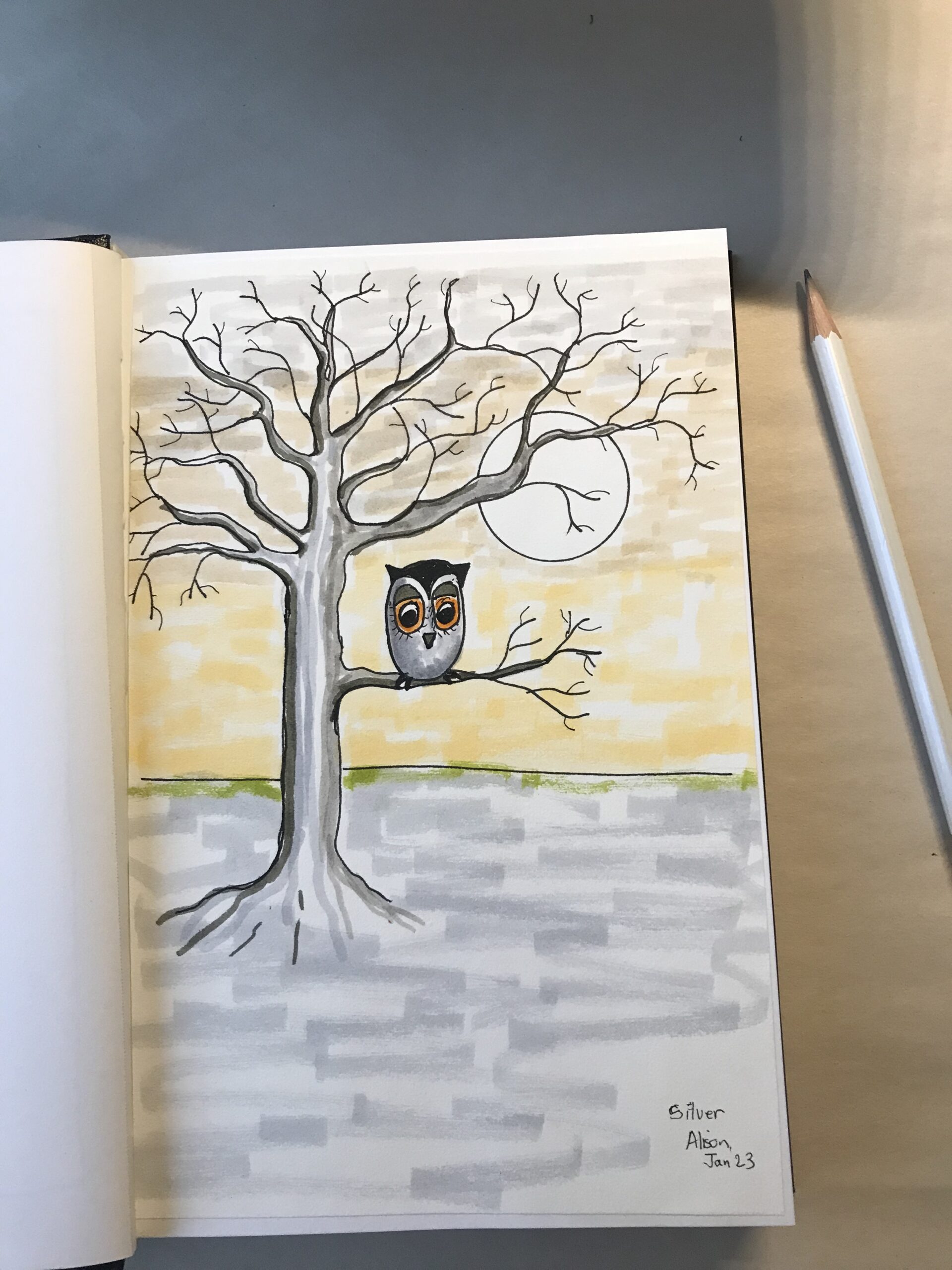
Here I drew a grizzly bear hibernating in a cave through the cold winter months. I noted the proper name of Ursus Arctos as well. Who knew?
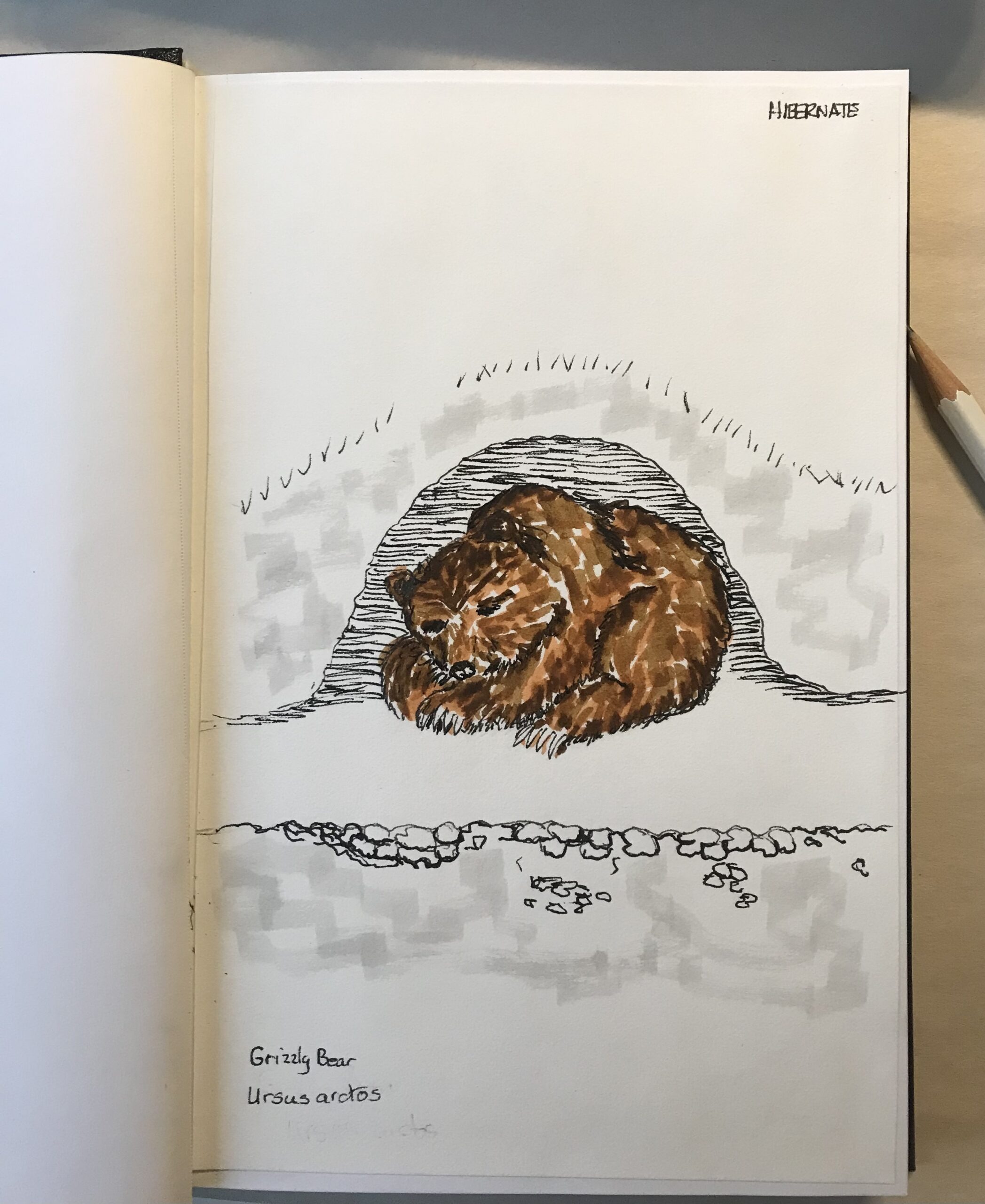
Below are some more of the artworks from the Seasons of Art Winter Challenge. Some are not quite finished yet but I though I’d add them anyway so you can see how far I’ve got.
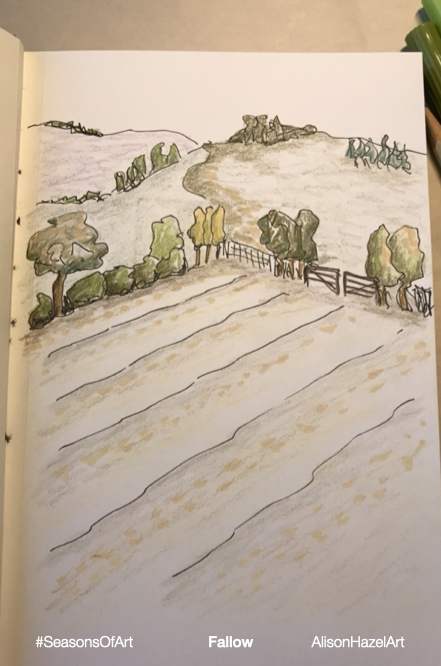
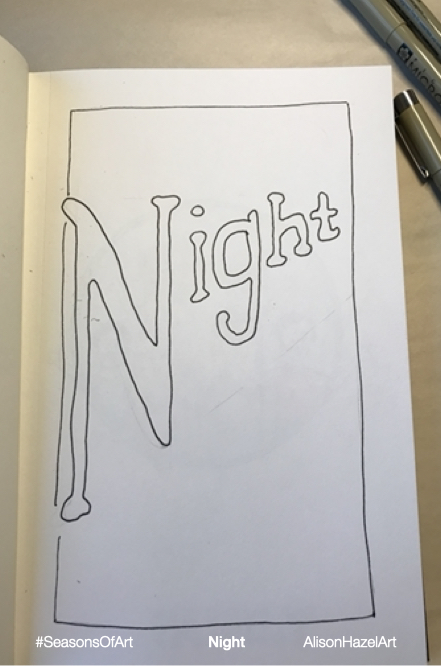
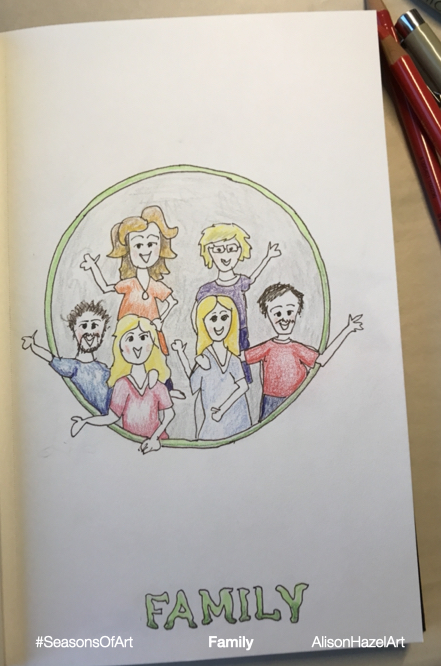
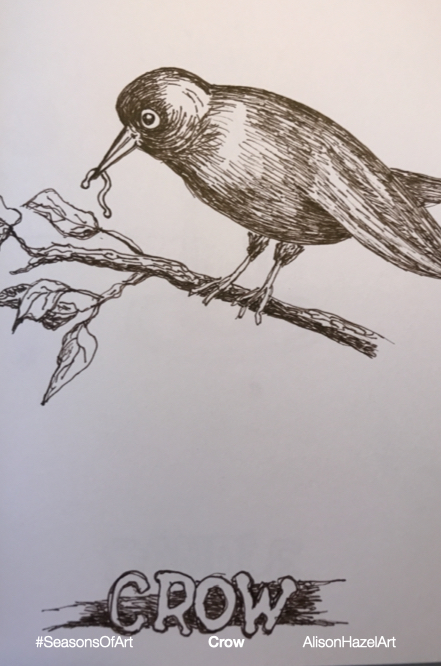
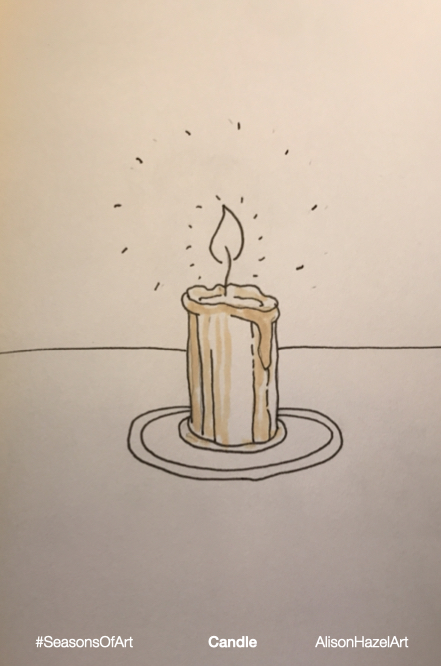
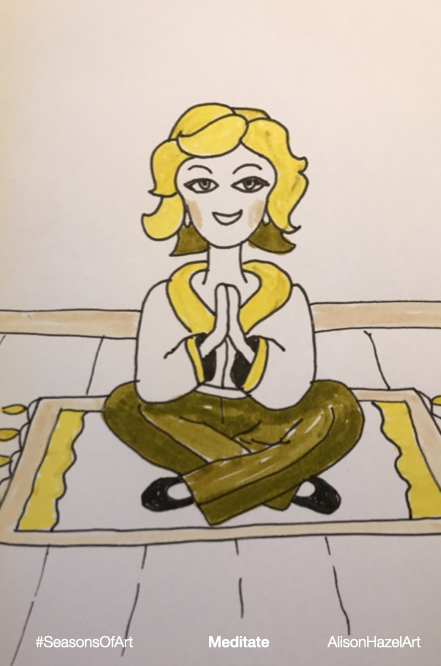
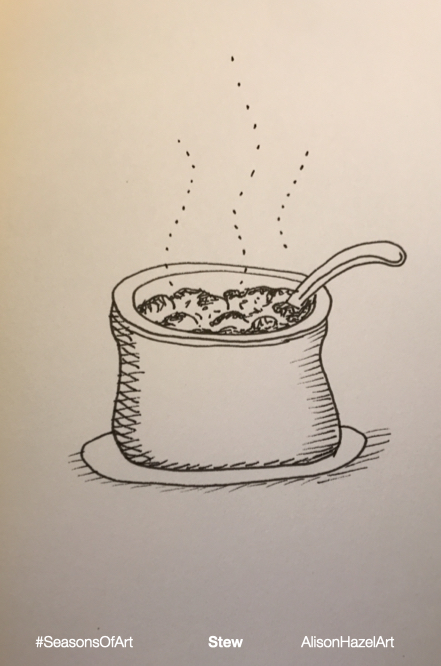
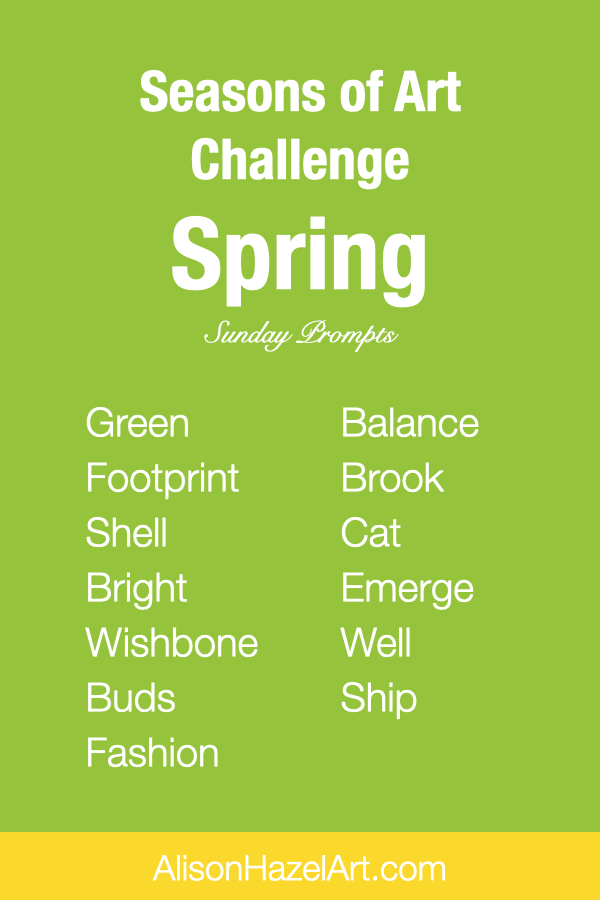
Save this pin to read later.
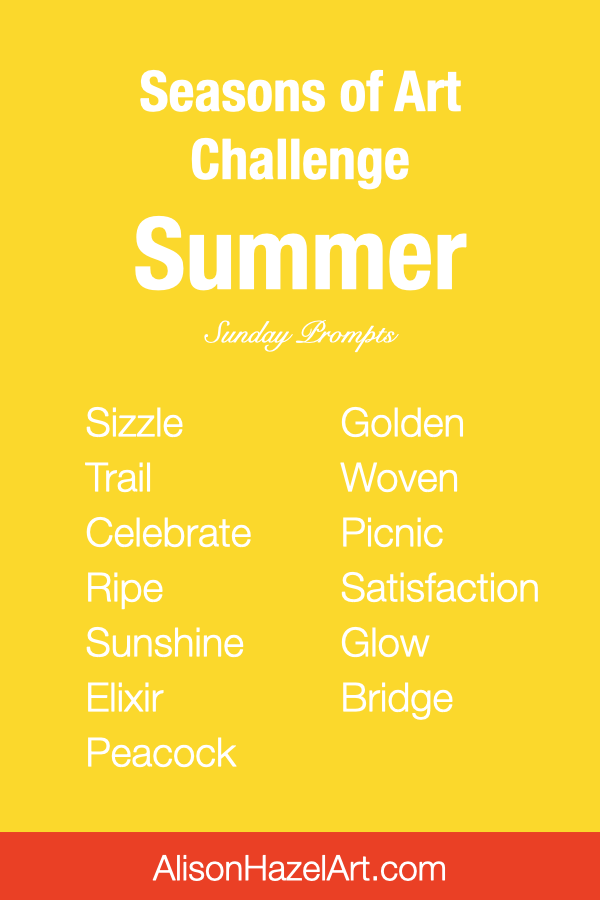
Save this pin to read later.
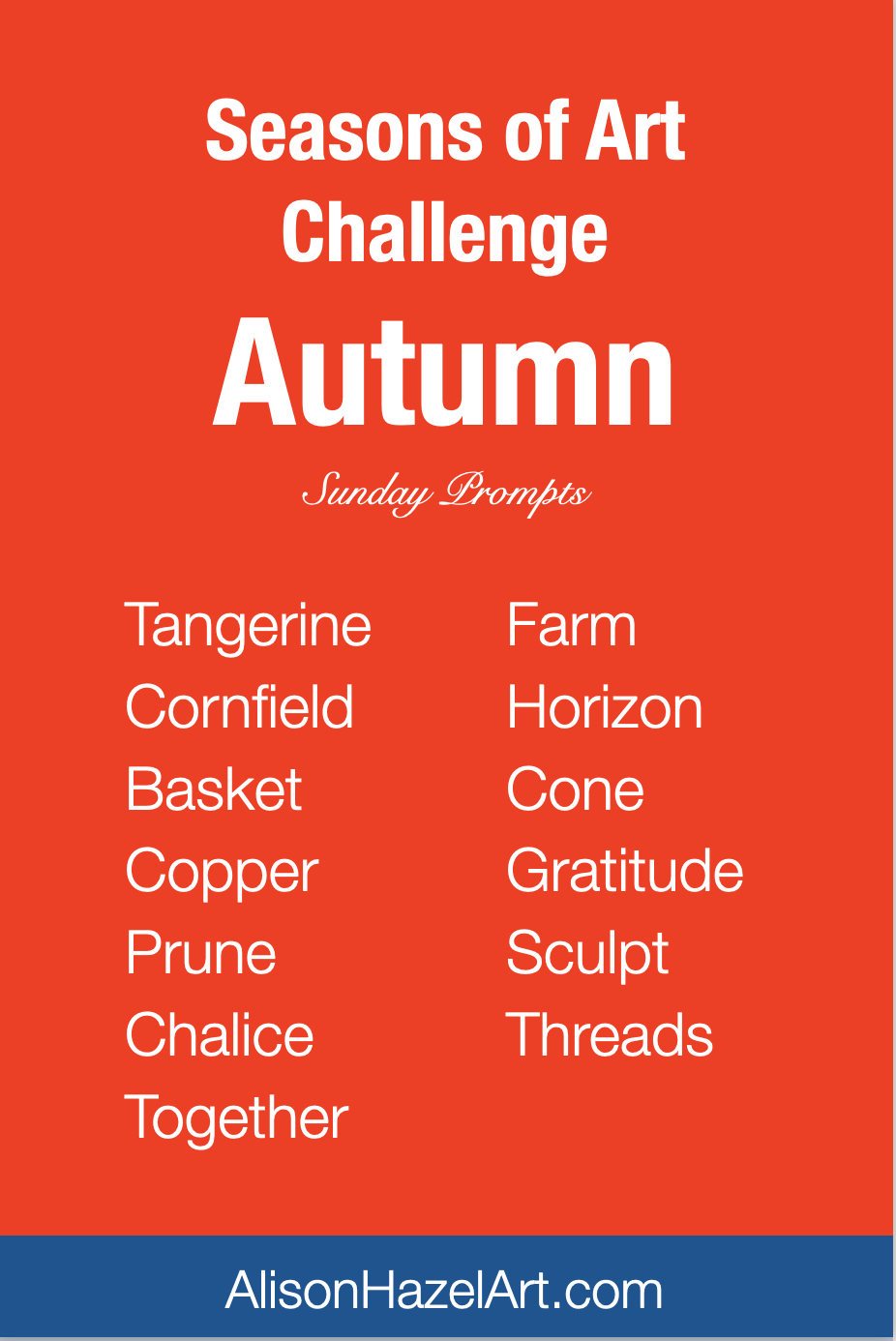
Save this pin to read later.
If you live south of the equator then switch the seasons so they make more sense. For southern hemisphere people please swop summer with winter and spring with autumn.
Because the very first Sunday in the December winter season falls on a different day each year, it makes it that there is usually only one week in the first year. All the rest of the weeks for the winter season will be in the next year. This makes Seasons of Art a great art project to do for the whole of the year if you would like.
In theory, you could do a full art journal for 52 weeks which is broken down into four seasons of the year. Alternatively, you may decide to do one season, perhaps the winter season, then skip spring, and go straight onto summer if you enjoyed doing the winter season.
The big thing about art challenges is that they get you into the habit of doing art regularly. Whilst I like to do art daily, I can’t always manage it, but I know for sure that I can create art on a seven-day cycle, and this is where weekly art challenges come into their own.
Use the hashtag #seasonsofartchallenge. Can you see it could be said as, “seasons o fart challenge?” Well, we can live with that. 🙂
A weekly art challenges such as Seasons of Art where once a week you make a drawing in your sketchbook is ideal to keep an art practise going. Ideally you can have a dedicated sketchbook for your Seasons of Art for the Year.
If you are going to do the whole year then it makes sense to get a lovely sketchbook beforehand that has at least 52 pages in which you can do your drawings. This type of weekly project can result in you creating a huge memento or even heirloom art book showcasing the type of art you created during this year.
Now of course you will be doing other artworks on the side. For example, I will be working on my other journals such as my perpetual nature journal. Also, I’ll be doing other work in my grimoire, but the point is that if I have a dedicated Seasons of Art journal it will end up being a delightful reminder of the type of art and the technical skills and media interests that I had during this year.
Looking back, I can reflect upon how revised my approach, developed, or pivoted, my art direction that year. Join us.
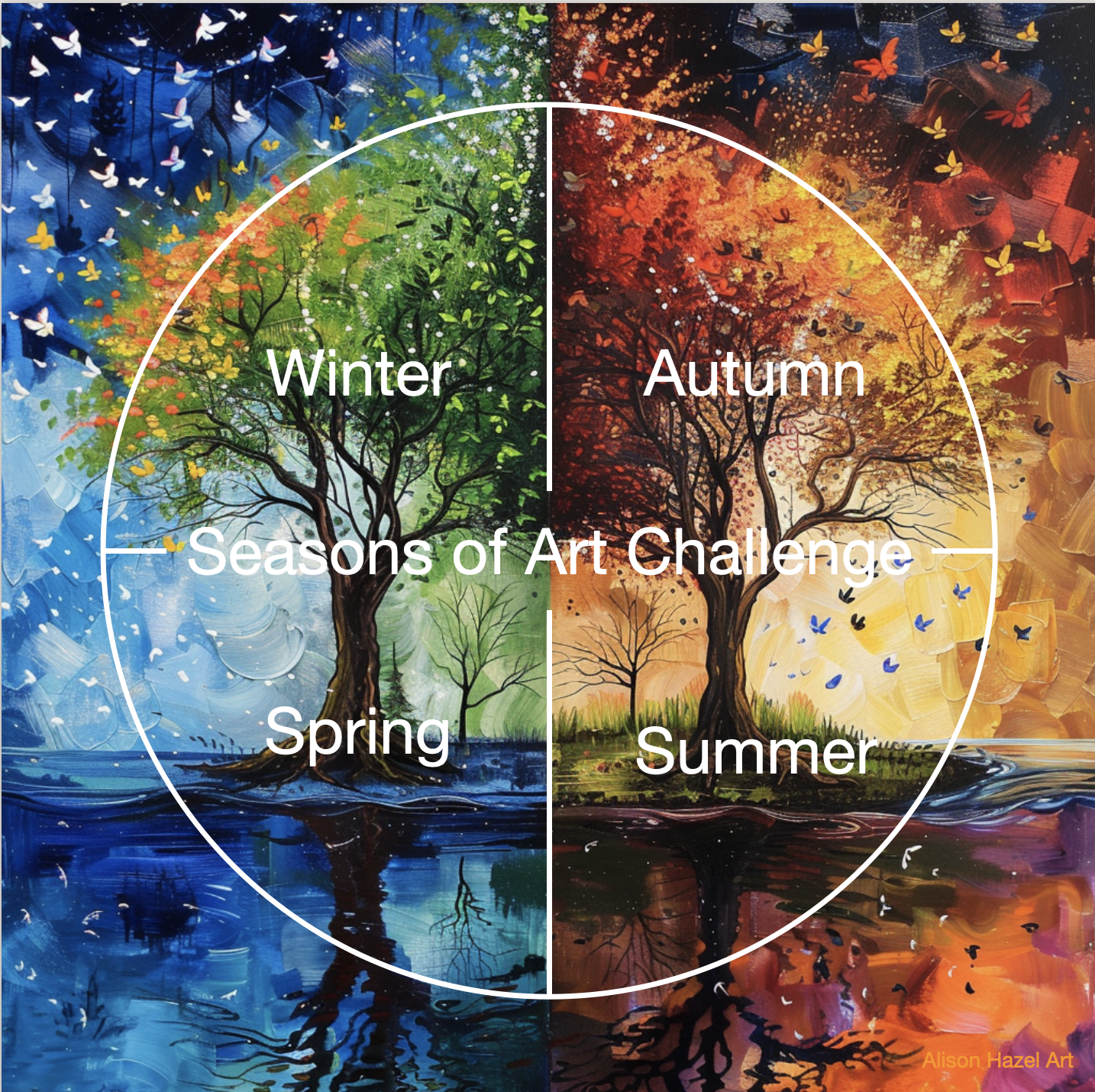

Alison Hazel is a hobby artist and she shares her ongoing journey about becoming an artist later in life. She creates simple art that anyone can make. She hopes to inspire you to reach your creative potential in the area that suits you.
The page you requested could not be found. Try refining your search, or use the navigation above to locate the post.
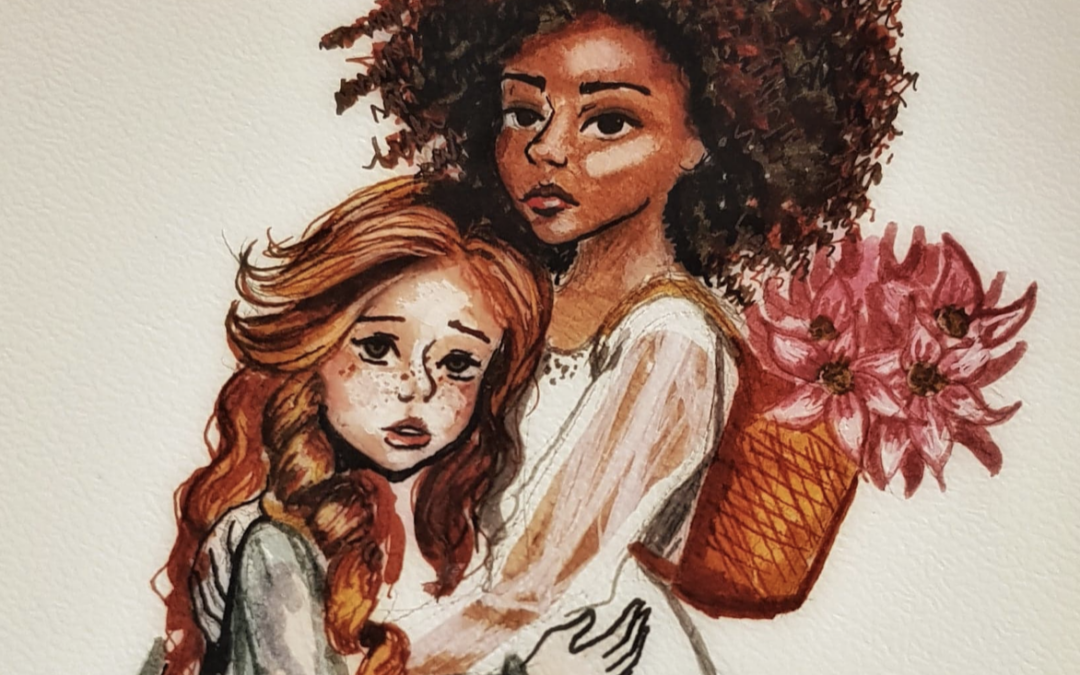
Read the interview with artist Sandra Sabota who won Inktober/AHAtober for the first time this year. Inspiration for Aspiring Artists.
The page you requested could not be found. Try refining your search, or use the navigation above to locate the post.

To be an artist is frequently to be seen as someone who:
This is the standard meaning of when we say “Artist,” but can someone who does not have all, or any of the above, be considered an artist? The answer is yes.
To be an artist is to create either with drawings, paintings, music, weaving, dance, sculpture or in other ways. The activity of creating something that was not there before is artistic. You do not have to be trained to be an artist.
A hobby artist is someone who makes art for the joy of it.
An aspiring artist is someone who works on their techniques, practices art most days and who enjoys making art.
I believe that most people can be an artist. I see myself as an aspiring artist. I create every day. I sometimes post my work online and on my social channels not only for you to see, but so that next year I can go back to this year and see my progress.
You can be a great artist overnight, but you can be a great artist with practice. Believing that you are on the road to becoming and artist, or an aspiring artist, is the first step. Self-belief is critical to your ability to have faith in yourself.
Aspiring artists are those people who enjoy art and may have done art as a hobby and they like how it makes them feel.
Aspiring artists…
Perhaps you can think of a few more statemenst about aspiring artists.
Aspiring Artists may squeeze art practice into lost corners of time in their day.
For instance:
Aspiring Artists may take their sketch book with them everywhere they go.
I believe that are hundreds of aspiring artists working away in attics and coffee shops and at their kitchen tables around the world. Maybe you are one.
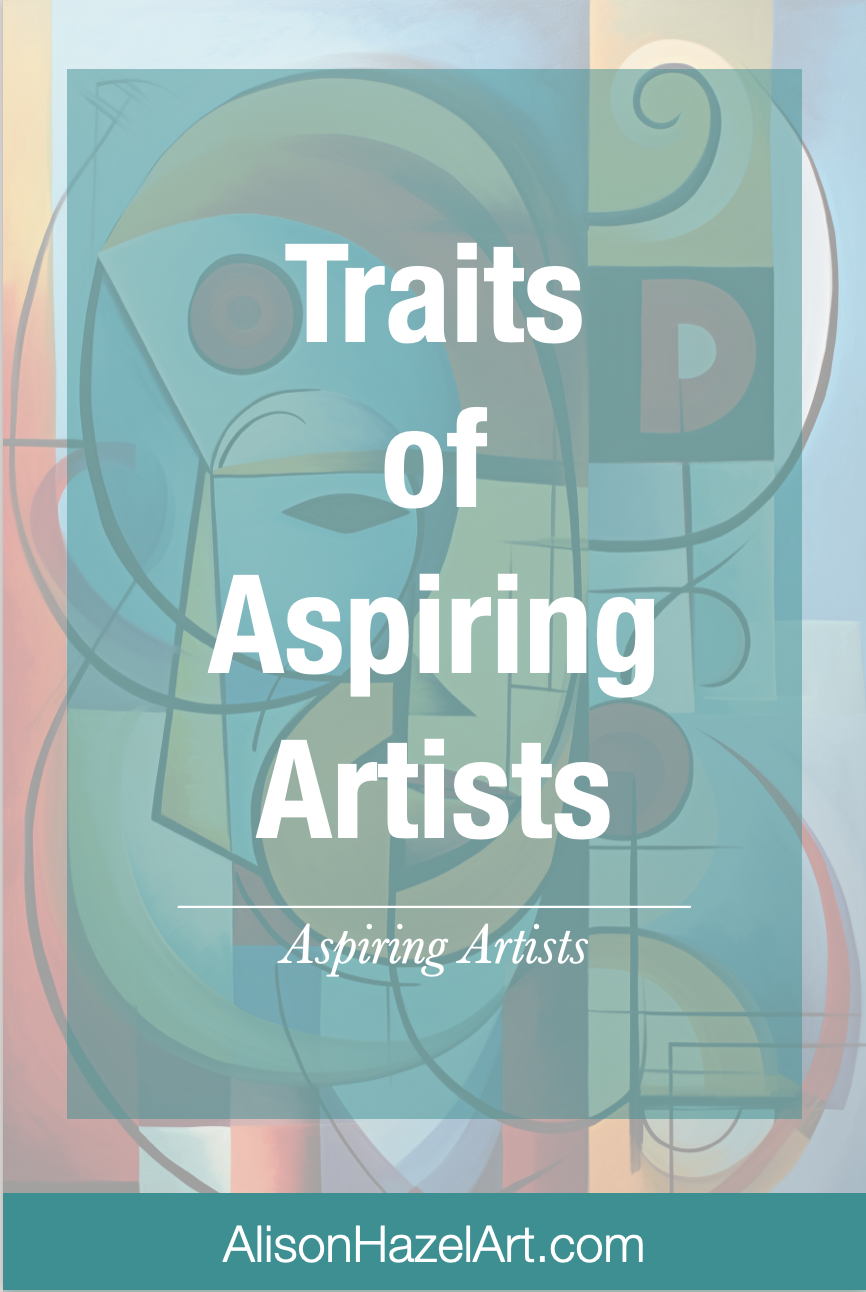
Save this pin to read later.

Alison Hazel is a woman who shares her ongoing journey about becoming an artist later in life. She creates simple art that anyone can make. She hopes to inspire you to reach your creative potential in the area that suits you.
If you enjoyed this post you may love more articles on our site.

Author: Alison Hazel - Published: January 2023 - Revised: February 2024 Gifts for You As a strong creative and arty person, for many years, I have generated countless free resources on Alison Hazel Art. These guides, lists and templates are to help you get...

Get the AHAtober prompts and learn how you can win Inktober, what I’m doing to compete and what to do with what you draw.
The page you requested could not be found. Try refining your search, or use the navigation above to locate the post.
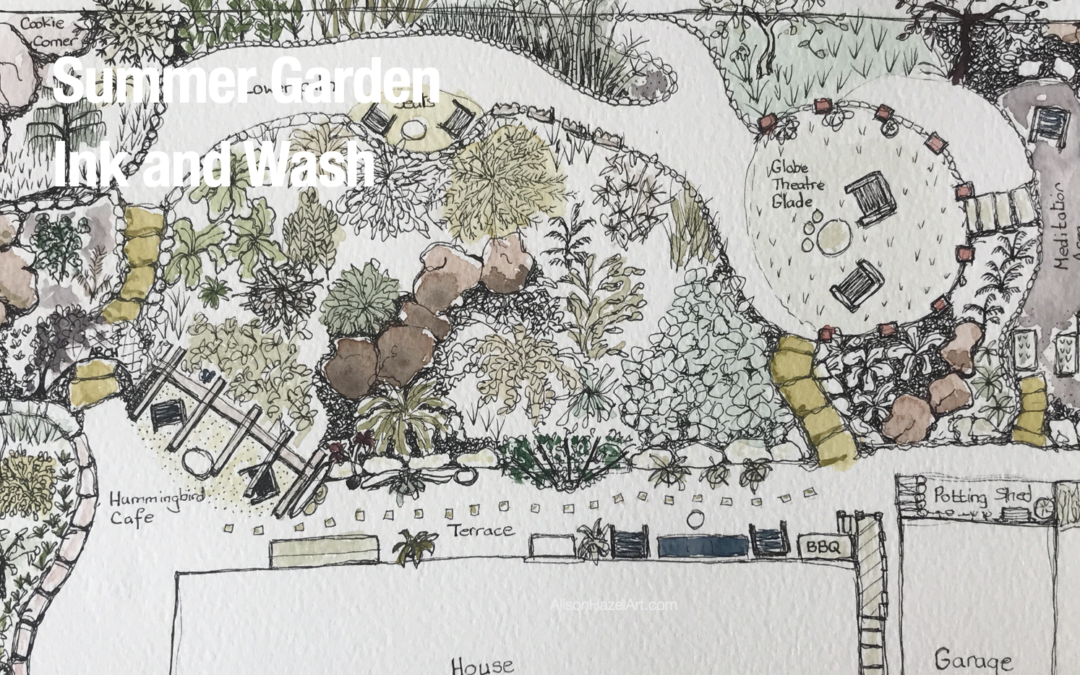
This summer I was fortunate to take a week off to visit some good friends of mine who live on the Sunshine Coast in west British Columbia, Canada.
Their delightful home is perched high on a hill with sea views that overlook the local bay.
This is a wonderful spot to observe sailing boats, cargo ships and cruise liners navigating up and down the coast.
We also spotted hawks and eagles.
In early evening, the full Moon rose from the east, climbed high and bathed us in shimmering light that danced across the water and set the scene for a perfect moment.
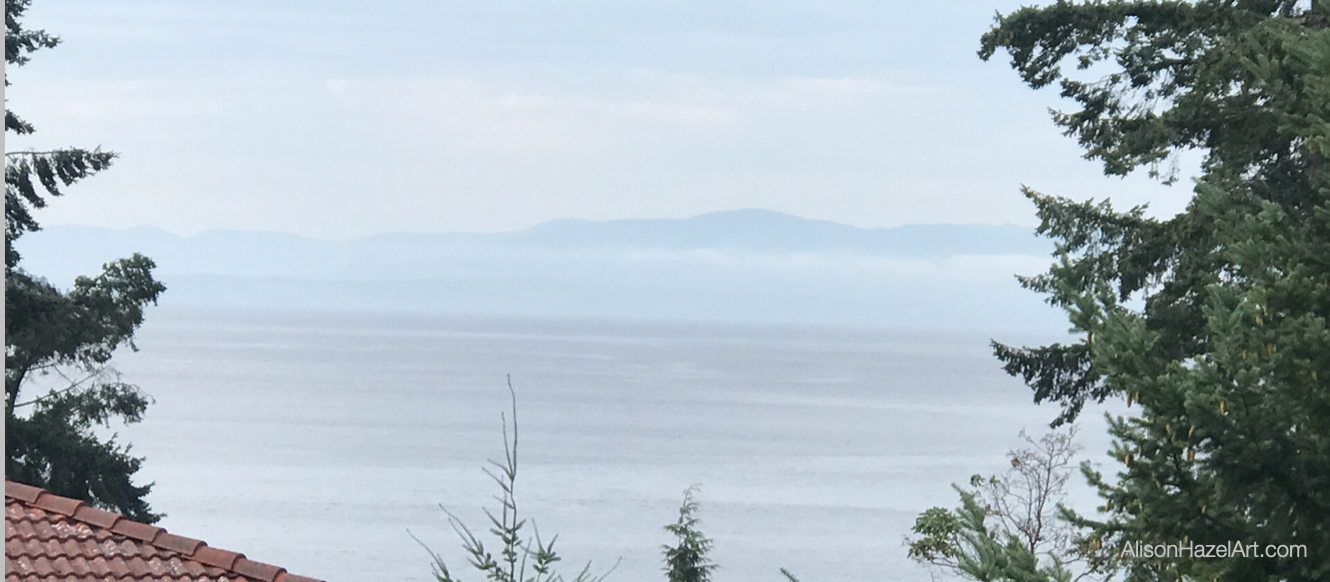
Due to the rugged terrain, the front garden has deep lavender and cone flower terraces supported by tons of bedrock underneath.
The house is perched right at the apex of a rocky outcrop.
After a 3m wide terrace, the back garden falls off at a steep incline plunging to the lower garden level below.
Due to the incidence of forest fires and a lack of rainfall in the area, there are stringent water restrictions in place during the summer months.
This means that you can only water with handheld hosepipes or buckets for two hours each day.
Therefore, this garden must contain chiefly indigenous plants which can survive these dry hot conditions and those which can make it through the harsh winter snows that may accumulate up to two feet deep.
Because of the natural terrain, the back garden is particularly interesting with a walking path that winds throughout.
Looking with my artist’s eye, I decided to draw a plan view of this garden rather than to select one part to draw.
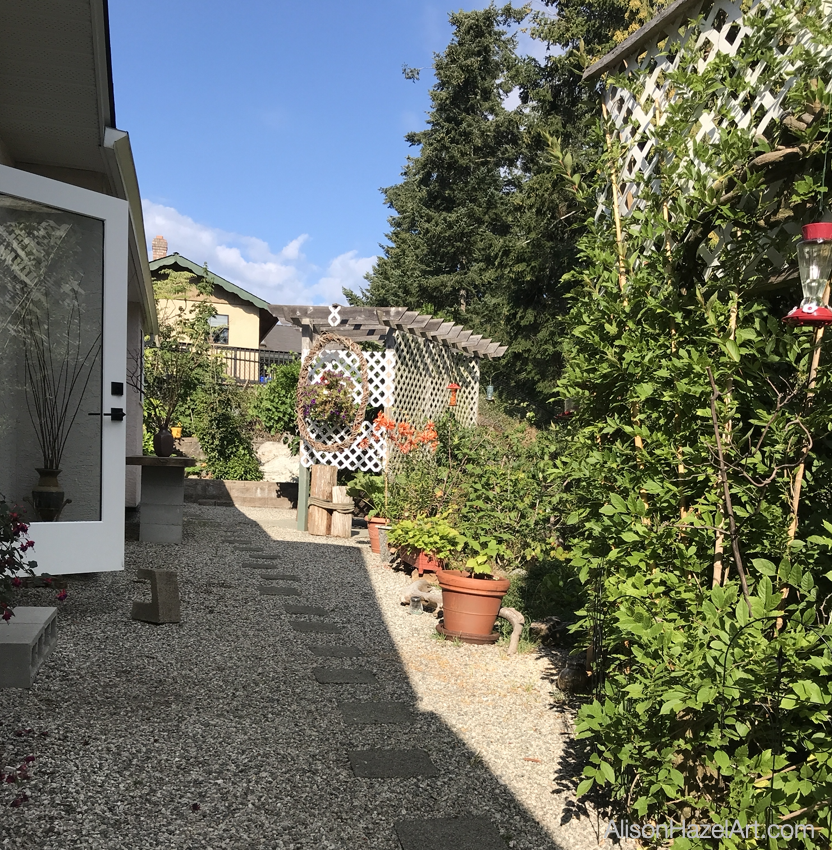
I created the sketch for the plan view from the terrace by lightly drawing the outline shape of the perimeter fence and the outside walls of the house.
I later realized that the garden is not actually square, but it’s a bit more of a rhomboid shape and that the house has a few more ins and outs than I had in my sketch, but in general, there are two rectangular shapes, the fence and the house.
With a 0.1mm black pen I lightly sketched the main features of the garden.
First, I drew the terrace round the back, the gates on either side, the pathways and the rough hewn stone steps to the east and west.
Next came the sitting areas of which there are several.
There is the main terrace seating area, the Hummingbird café bench, the lower-level intimate chat section on the path, the main stage forum in an emerald glade of fine grass and finally, a few steps up from there nestled a garden chair in the solitary meditation area.
Along the wall I sketched in some of the massive external boulders as this garden was basically hewn out of bedrock.
Some of the trees and plants are quite spectacular.
There is a gigantic wisteria on an espaliered fan just at the top of the terrace which I drew first.
A colossal magnolia tree with extra-large blooms dominates the scene right down in the main valley, but still visible from the house.
Around the corner to the left, is a delicate rose garden still under development.
A hardy white grape vine cascades over an aging trellis arch at the top of the western staircase flight.
Against the back boundary grows a towering clump of bamboo which eagerly shot up this summer.
A sun-kissed covered seating area is fondly called the Hummingbird café for obvious reasons.
The guys have hung feeders and the birds flock in.
Down at a section which I think is called the “globe theatre glade” had been erected several vertical poles all around the circle.
This provides a strong statement area.
Topping each post are stylish multi-colored garden lights which can fluctuate from white to colored, warm or cool at the flick of a switch.
To have a wonderful area in which to gather on warm summer evenings is no doubt a serene place where the imagination can soar.
The folks had strategically positioned several raised beds and grow a striking selection of herbs and vegetables including some immense tomato plants.
Pumpkins cascade out of terracotta pots to seek the warmth and light.
This vegetable heaven is over towards the east of the property, so on the plan view it is represented with oblong boxes.
Once I had laid down on the page the main hard pathways of this drawing, the key seating areas and some specimen plants, I was ready to fill in the rest.
I took my time in the core section and found different ways to illustrate distinctive plants.
Now this really is me using my artistic license as there are many component bushes and trees thriving in this area.
For most of this drawing I used plan perspective which means the viewer is looking down from above.
Plan view lays things out very much like a map.
For a lot of the unknown shrubs, I use the plan viewpoint where I just plonked the leaves on the page, but in some cases, I employed elevation perspective where I created the side view of the plant in its position.
This combination technique adds visual interest to my illustration.
A vast number of birds are attracted into the garden.
The hummingbirds came in their droves.
I saw blue jays for the first time in my life.
Chipmunks popped in and out of the shrubbery busily collecting snacks, peanuts and seeds.
Many chickadee birds fluttered in the trees and around the bench where I was.
As I sat on the terrace with my sketch paraphernalia, a chickadee bird swooped down and landed on the top edge of my sketchbook.
To start with I didn’t realize what it was and I let out a scream that had the household running as I leapt to my feet.
I soon realized it was a cute little two-inch wild bird.
I settled back down to my sketching and five minutes later another chickadee, probably the same cheeky one from before, landed on the toe of my flip-flop as I relaxed, legs crossed, sketching.
This time I kept my cool as by now I was an expert outdoors woman and not just a city slicker.
I had visited this enchanted garden last year and although the main features were in place and all the hard landscaping had been done, back then the plant life itself was quite a wilderness.
In the year I have been away, the owners have really labored to clear a lot of the vegetation to bring forth specimen plants that were there, but could not be seen.
By the sweat of their brow, they felled dead trees and cut back countless brambles and blackberry bushes to let the light in and which allowed lower growing shrubs to have a fighting chance.
Gardens, obviously, are living things and that they continue to evolve, whether we pay attention on not, is a natural wonder.
I look forward to witnessing how this well-loved outdoor space will develop in the future.
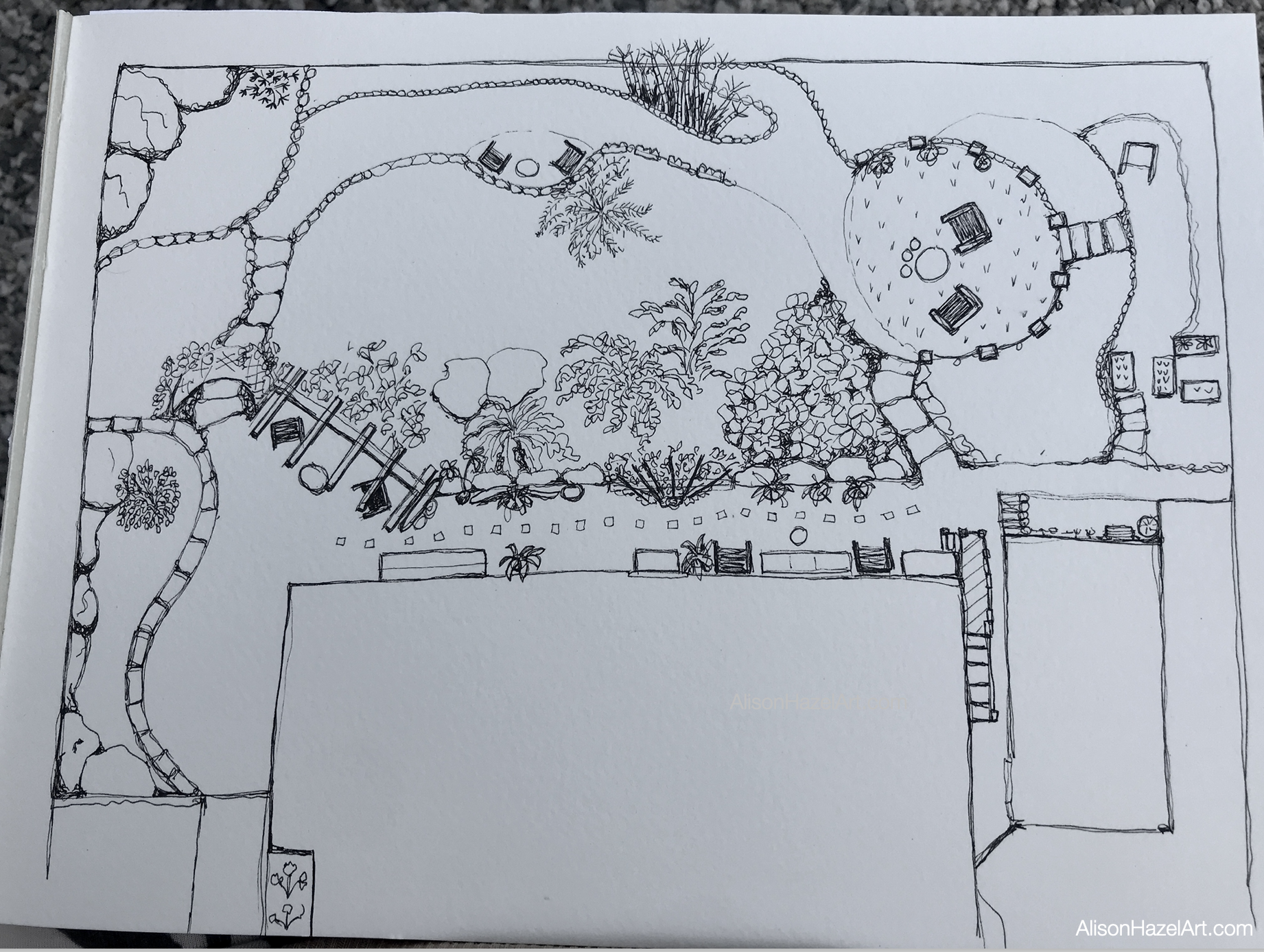
I had my traveling art field sketch equipment with me as I don’t like to take too much art stuff when I go away.
My minimal drawing kit included:
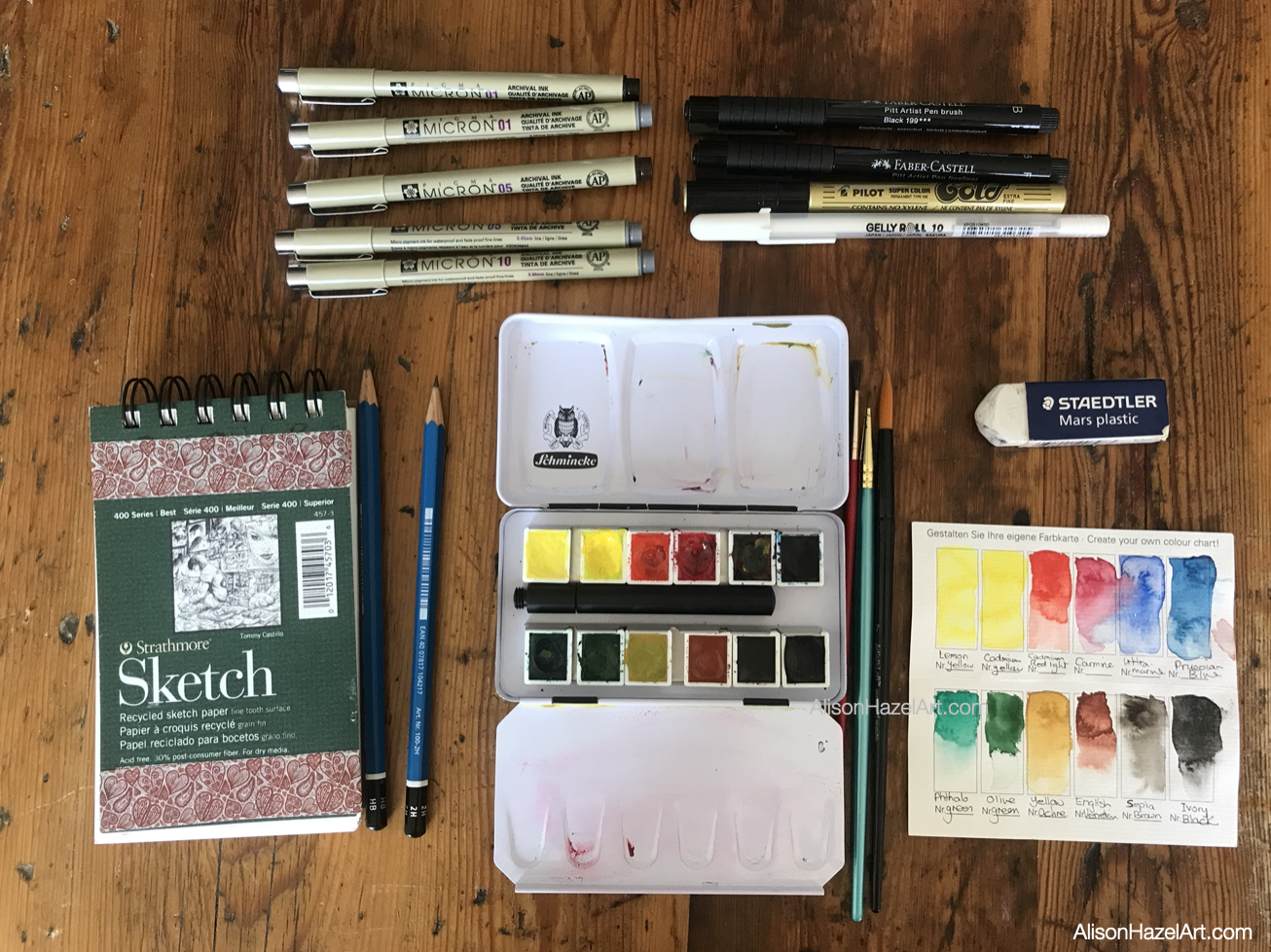
As I have recently been getting into colored ink work, I really wanted to take my tinted inks with me, but it was totally impractical to lug twelve small glass bottles of quick-stain ink my bag.
The thought did cross my mind and then I let it go…
After breakfast I set myself down on the back terrace with my field drawing equipment.
My water pen had some liquid in it which I prefer rather than a jam jar of water.
Mixing olive green and yellow ochre, I put two drops of water into the khaki pan and two drops of water into the mustard-like pan and with my paintbrush slowly stimulated the paints.
Then I mixed the two colors over on the paintbox lid palette.
I thinned the colours down substantially by releasing drops of water into my palette.
I’m really working with microscopic amounts of paint here with only one or two teaspoons of each color.
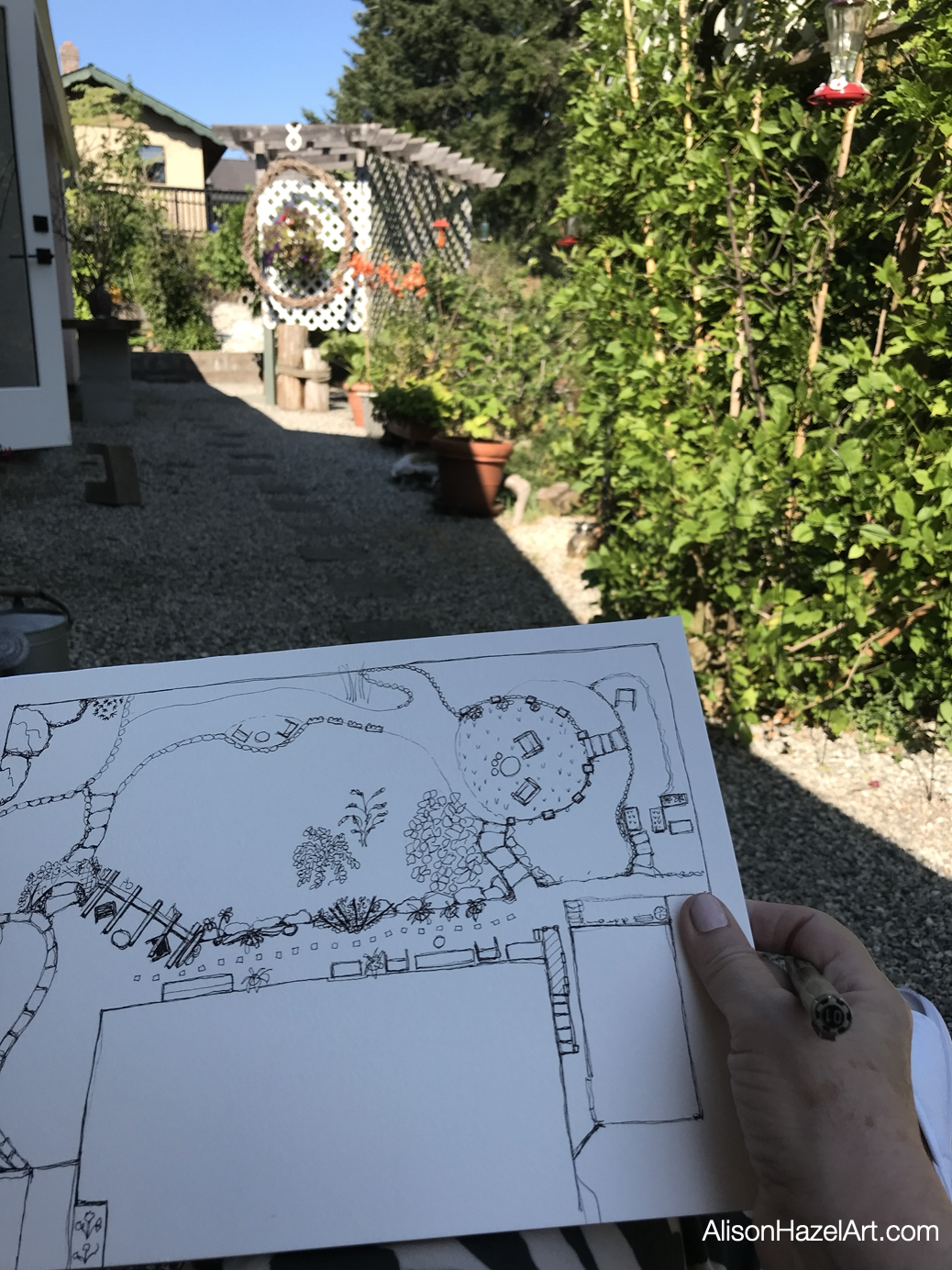
I started coloring the stone steps to the east and west and some of the main boulders with very light watercolor wash
Ensuring to let the pigments dry and to not work on adjacent colors that were still wet, I pushed on.
Lightly washing the shrubberies in different greens, I developed the plant life in the garden.
It was a scorching day around 28C and the paint was drying quite fast.
I turned to the large stones with some yellow ochre and a dab of sepia brown.
Once the boulders were dry, I mixed up a slightly deeper carmine red and added light shadows nestled below and to the left of each rock.
Adding shade again breaks from the plan view to the elevation view, but this is a piece of art, so that’s why I did it.
I believe the combination of top and side views created additional interest in this artwork.
The owners have some fun and quirky names for the different zones of their garden.
Where I could remember some of the words, I wrote them on my drawing.
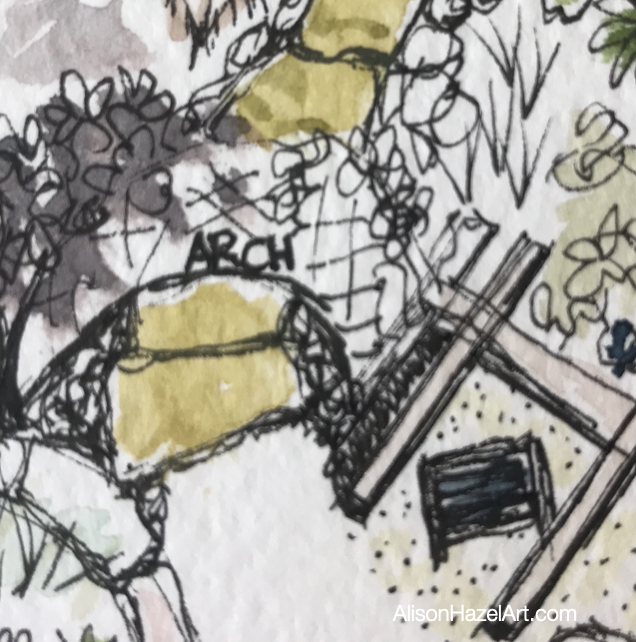
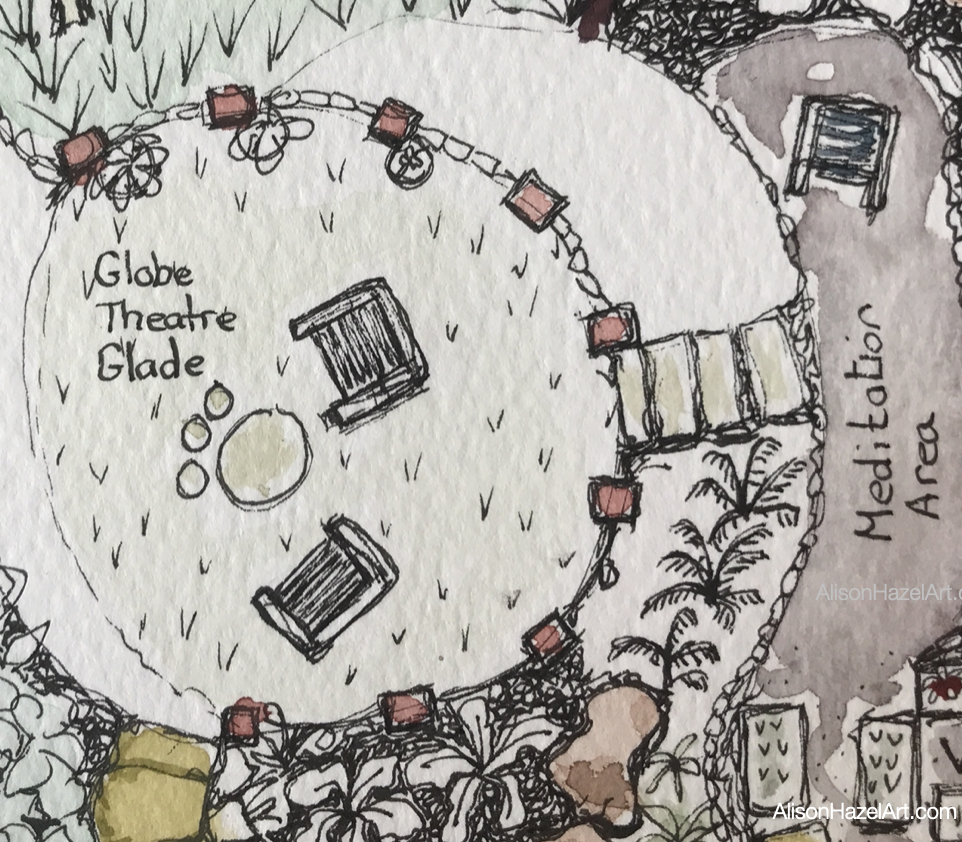
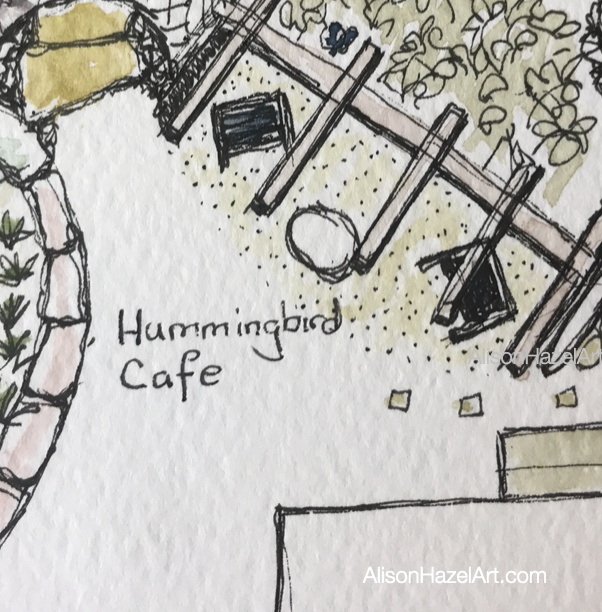
I did enjoy creating this artwork.
Although it is not correct as an architectural drawing or even perhaps a garden layout drawing, it is a perfect sketch representation of this wonderful and magical garden.
As my friends continue to pour love, warmth and energy into their property, it will no doubt mature, blossom, bear fruit and become a garden of anybody’s dreams.
I feel honored to have shared some time with them in their wonderful uplifting outdoor space.
Thanks to my friends for their exceptional hospitality and openhearted spirit.
I simply loved being an aspiring artist in their welcoming haven.
If you have are still with me this far in, then thank you for sharing part of your day with me.
Love,
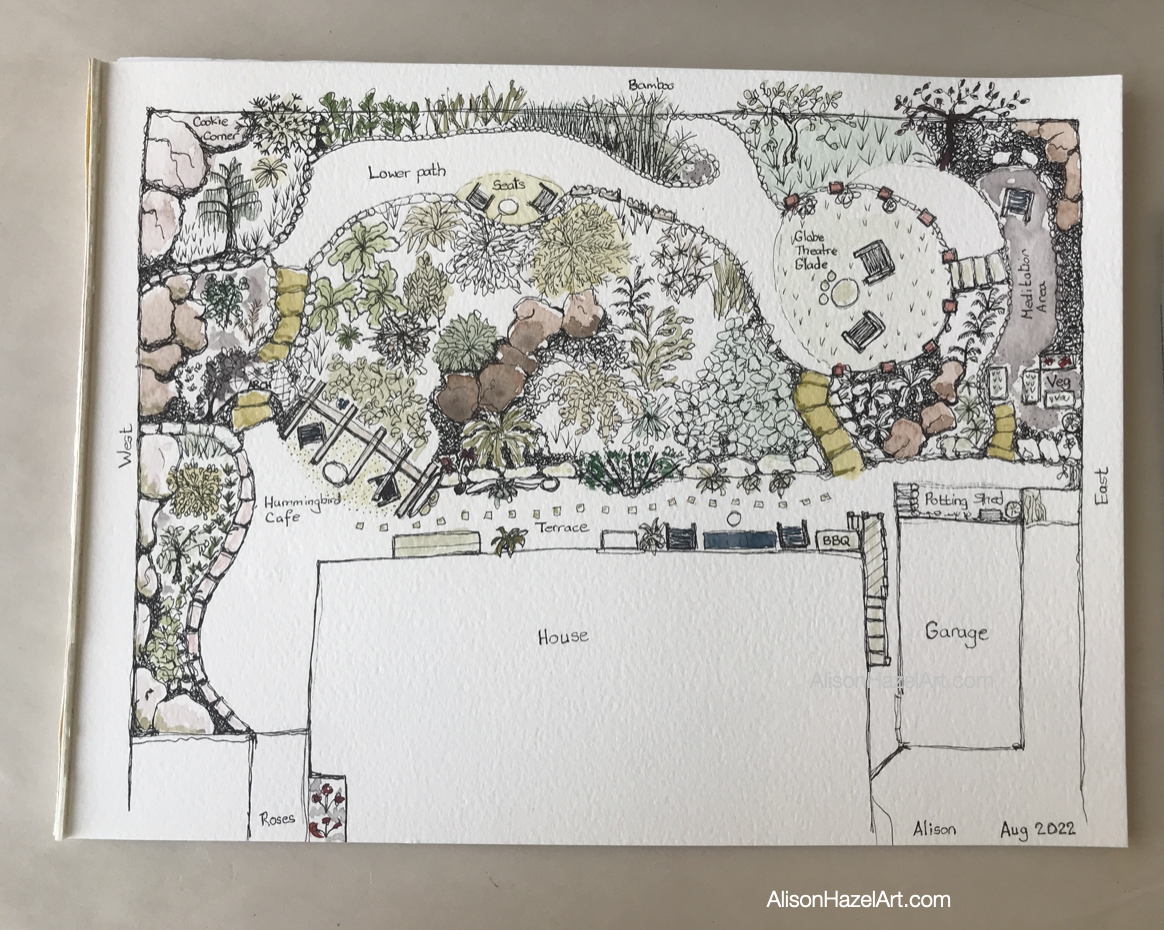
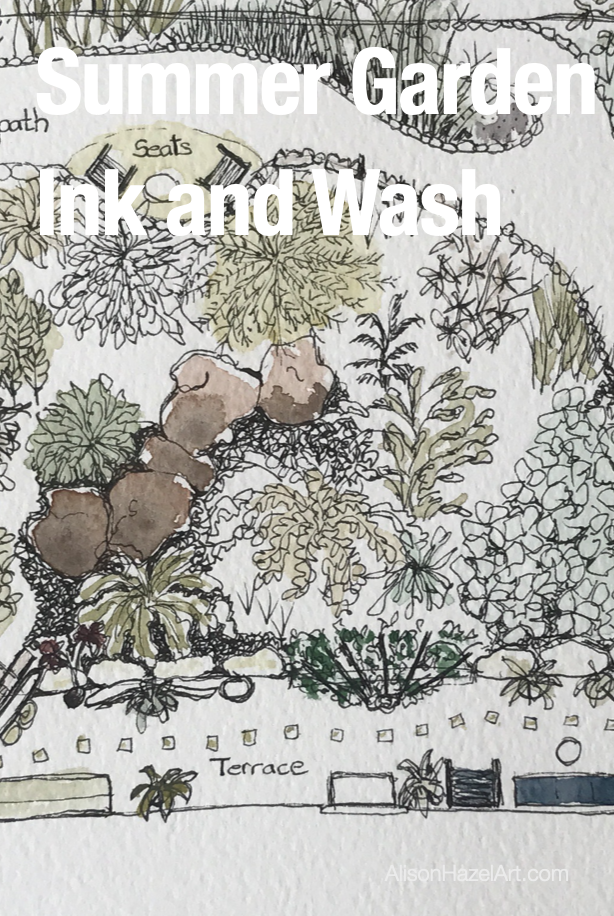
Pin this image to your Pinterest board.
This activity is to draw an artists impression, or illustration of your backyard.
If you don’t have the luxury of a garden, find another natural space which you like to visit.
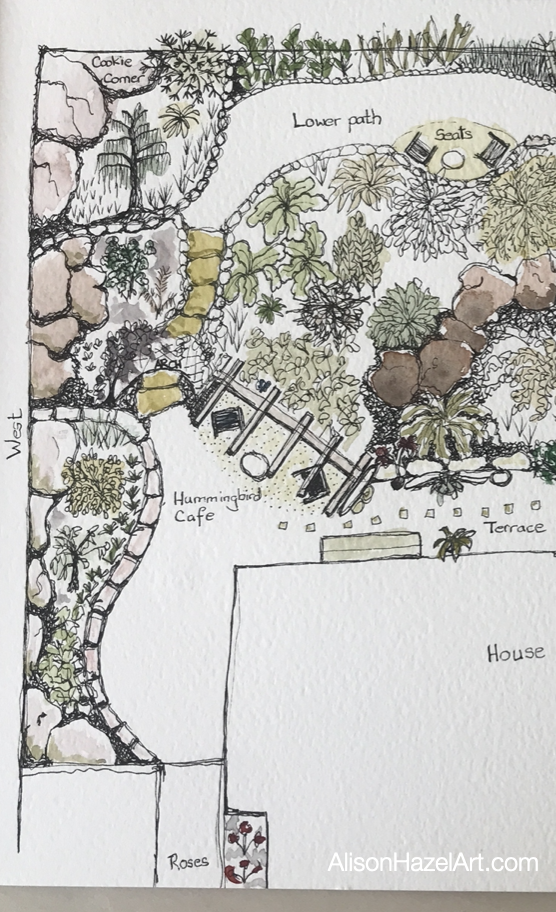
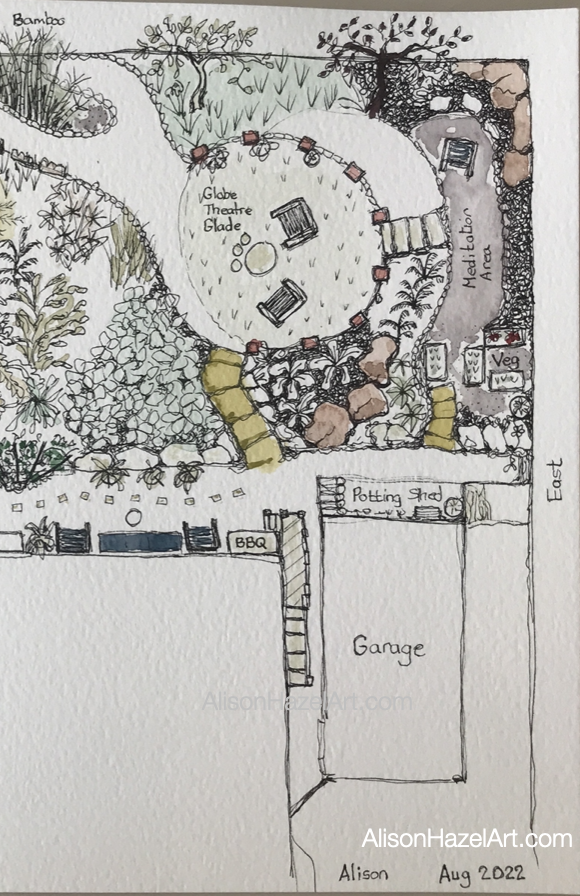

Alison Hazel is a mature woman who shares her ongoing journey about becoming an artist later in life. She creates simple art that anyone can make. She hopes to inspire you to reach your creative potential in the area that suits you.
Go here to read more about Alison’s story.
If you want to send Alison a quick message go here.
If you enjoyed this article, you may like some more inspiration on starting your art journey and working with ink and wash.
Check out more of our blog posts below.

Read the interview with artist Sandra Sabota who won Inktober/AHAtober for the first time this year. Inspiration for Aspiring Artists.
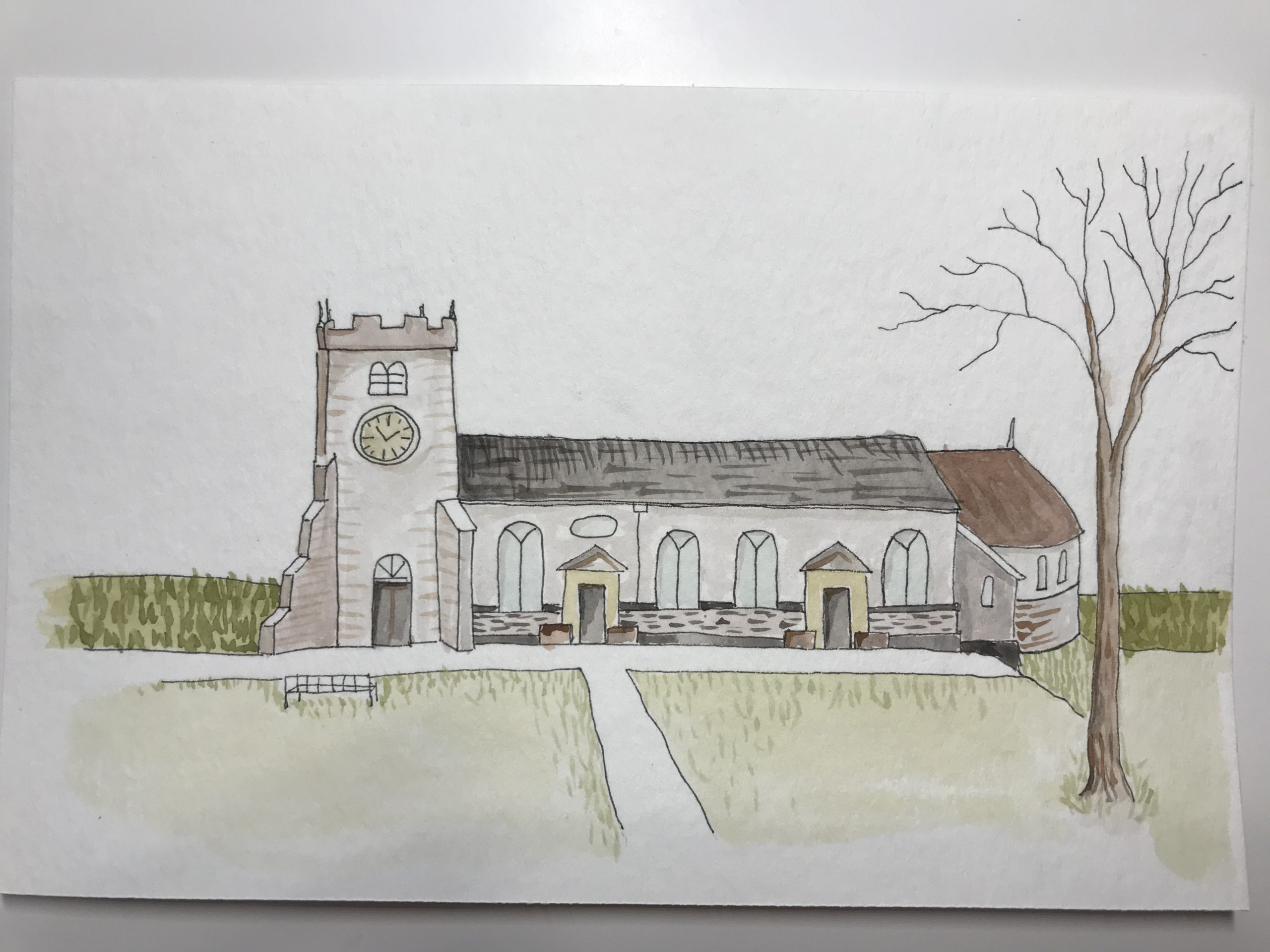
Read more about how I created this sacred places artwork of St. Chad’s Church with pen and ink and watercolor.

Join me as I sketch, draw and paint a weird autumn themed knobby gourd using colored ink as a hobby artist.